The Hisense U7Q is one of the most interesting Mini-LED televisions in its price segment, clearly showing that Hisense is really starting to matter in the market not only because of the price-to-capabilities ratio but also due to its increasingly refined picture quality. Let’s start with what truly impresses: the contrast and black levels are at a level that was recently unattainable in this price range. Combined with smooth tonal transitions, solid brightness, and a fast 144 Hz panel, the U7Q becomes a television that excels in both movies and gaming. Gamers will find nearly everything they could expect here – variable refresh rate (VRR) support, auto low latency mode (ALLM), very low input lag, and even 240 Hz in Full HD. All of this means that the U7Q will perform well with both next-generation consoles and PCs. However, it is not without its weaknesses. With HDR content, one might want to say: "untapped potential" – you may ask why? The television’s algorithms dim small bright elements or overly boost them, which can spoil the viewing experience. There is also a lack of support for HGiG, which is a feature that would better synchronize the console with the television for HDR. In summary, briefly – the Hisense U7Q is a very versatile and complete television that has its imperfections but makes up for them in many key aspects. For gamers, for occasional movie watchers, for someone looking for good equipment for everyday use – it is one of the most cost-effective propositions in 2025. One just needs to know what compromises they are signing up for – and then it will be hard to be disappointed.
- Matching (Score)
- Our verdict
- TV appearance
- Where to buy
- Contrast and black detail
- HDR effect quality
- Factory color reproduction
- Color reproduction after calibration
- Smoothness of tonal transitions
- Image scaling and smoothness of tonal transitions
- Blur and motion smoothness
- Console compatibility and gaming features
- Input lag
- Compatibility with PC
- Viewing angles
- TV efficiency during daytime
- Details about the matrix
- TV features
- Apps
- Playing files from USB
- Sound
Hisense U7Q vs SONY BRAVIA 3
Direct compare
U7Q / U78Q
BRAVIA 3 / K-(XX)S3

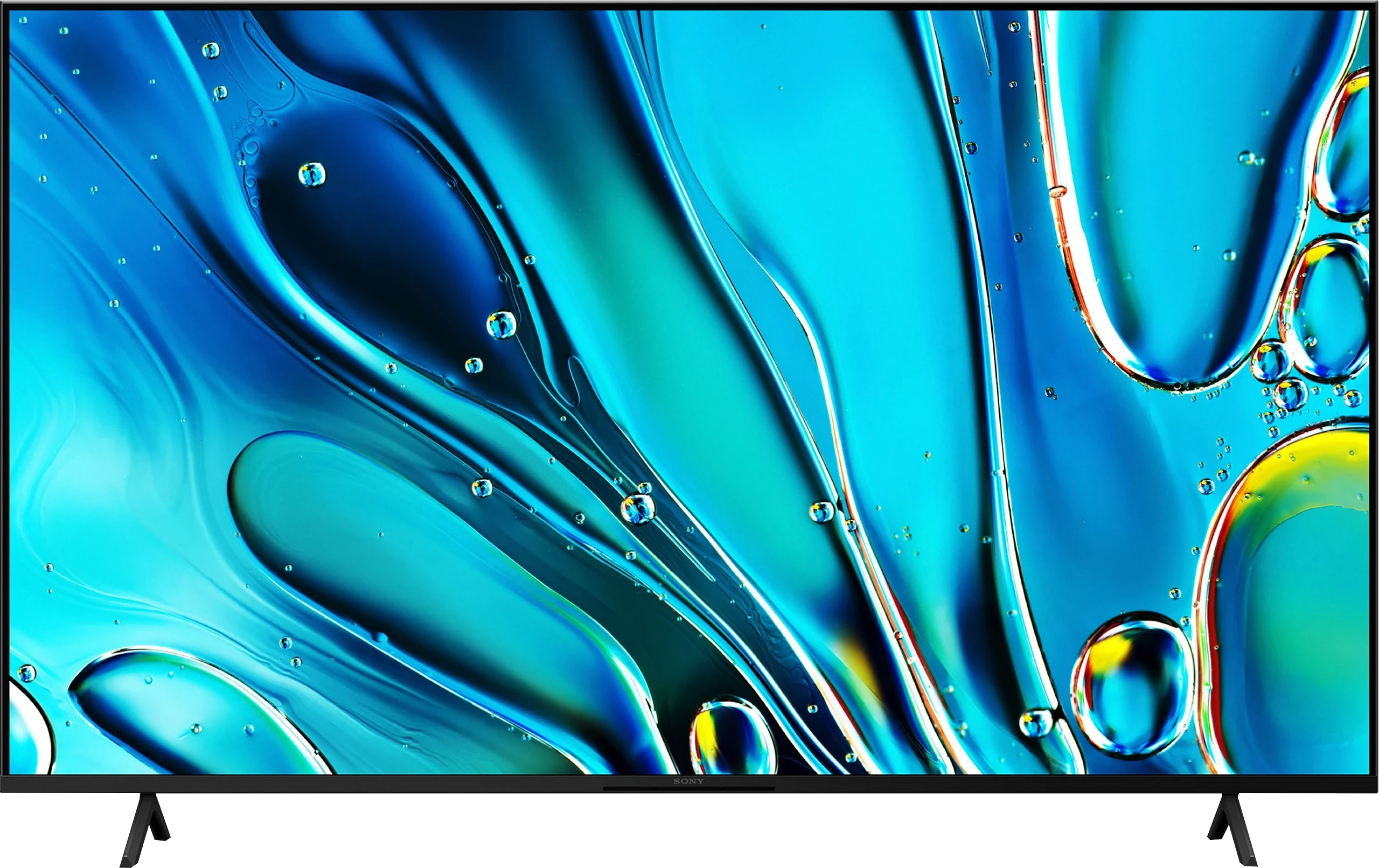
Panel type: LCD VA
Resolution: 3840x2160
System: VIDAA
Model year: 2025
Complete the survey to find out the result

Panel type: LCD IPS
Resolution: 3840x2160
System: Google TV
Model year: 2025
Complete the survey to find out the result

Overall rating
7.2
6.0
Movies and series in UHD quality
6.7
5.4
Classic TV, YouTube
6.8
5.3
Sports broadcasts (TV and apps)
6.5
5.7
Gaming on console
8.0
6.4
TV as a computer monitor
8.6
6.0
Watching in bright light
6.2
4.9
Utility functions
8.9
6.6
Apps
7.7
9.6
Sound quality
7.2
6.5
Complete the survey to find out what fits your preferences
Advantages
Great contrast and deep black
Very good smoothness of tonal transitions (close to reference level)
High brightness
Supports 4K 144 Hz and even 240 Hz in Full HD
VRR, ALLM, G-SYNC – a full package for gamers
Low input lag
Pleasant sound with a light bass
Many classic TV functions built into the VIDAA system
Google TV system - a huge library of apps and services
IPS matrix with good viewing angles
Improved colors - (91% of the DCI-P3 color space)
Supports Dolby Vision
Good upscaling - lower quality materials look surprisingly good
Great input lag and ALLM mode
Very good compatibility with PC - supports chroma 4:4:4, excellent font readability
Two remotes included - a modern minimalist one and a classic one with a numeric keypad
Very good built-in media player - supports a wide range of files, even less common ones like HEIC
Slim bezels and modern look - a definite step forward compared to X75WL
Supports Dolby Atmos and DTS:X
Disadvantages
Lack of support for HGiG (hinders HDR setup on consoles)
Brightness management issues
Poor viewing angles – typical for VA panels
Closed VIDAA system – missing some applications
Tragic black - IPS panel without local dimming
Limited brightness (about 350 nits), image in HDR mode is not very attractive
Issues with backlight uniformity
Google TV system can stutter
No recording function from built-in tuners to USB memory
Our verdict
Sony Bravia 3 is a television that brings several important improvements over its predecessor, while still staying true to its core. The biggest change is the design – slim bezels and solid metal legs make it look modern and fit much better in a living room than the X75WL. Improved colors thanks to the PFS filter and really good upscaling are also a plus. It is in lower-quality content, especially in classic SDR, that the Bravia 3 can show its best side – colors look pleasant, the image is clean, and thanks to the IPS panel, the viewing angles are at a very good level. For a role as a "classic" television receiver, where viewing comfort from different places in the room and decent quality of everyday content matters, it is virtually perfect. A huge advantage is also the Google TV system. During our tests, there were instances where the interface did not always work as smoothly as we would have liked, and some functions could freeze. However, despite these imperfections, the presence of Google TV is a huge plus – access to thousands of applications and a full streaming library compensates for the minor shortcomings. Unfortunately, what was weak in the X75WL remains weak here too. The IPS panel has very low contrast and does not offer local dimming, making watching movies in a dark room quickly lose its appeal – the black resembles gray and effectively detracts from the enjoyment of viewing. Additionally, the option to record content to USB, which was available in the predecessor, has been removed. It’s hard not to notice this and not add it to the list of cons.
So who is the Bravia 3 for? Primarily for those who want to enter the world of Sony televisions in the most affordable variant and at the same time value the Google TV system. However, it is not the most attractive option in its class – the competition in this budget can offer models with Mini-LED backlighting, whose image performs significantly better in terms of contrast and HDR. Therefore, the Bravia 3 is worth keeping in mind, but mainly when there is a solid discount. At its regular price, it will be very difficult to stand out against its more competitive rivals.
TV appearance




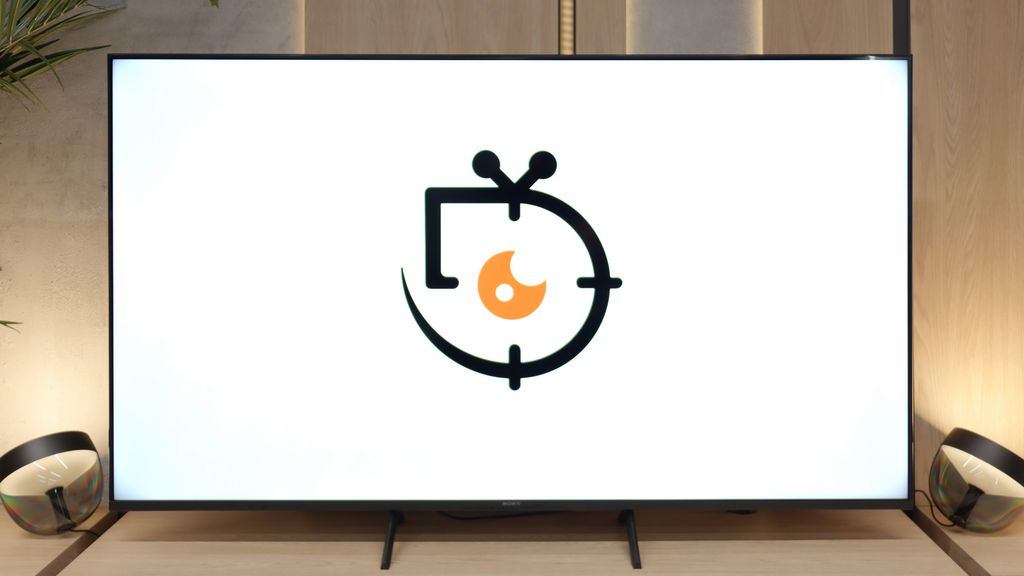
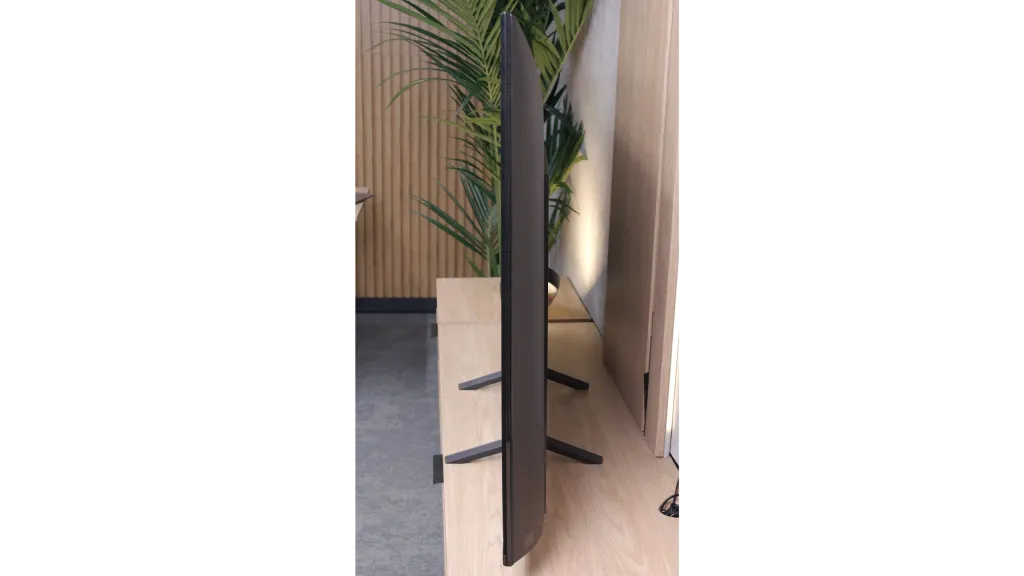
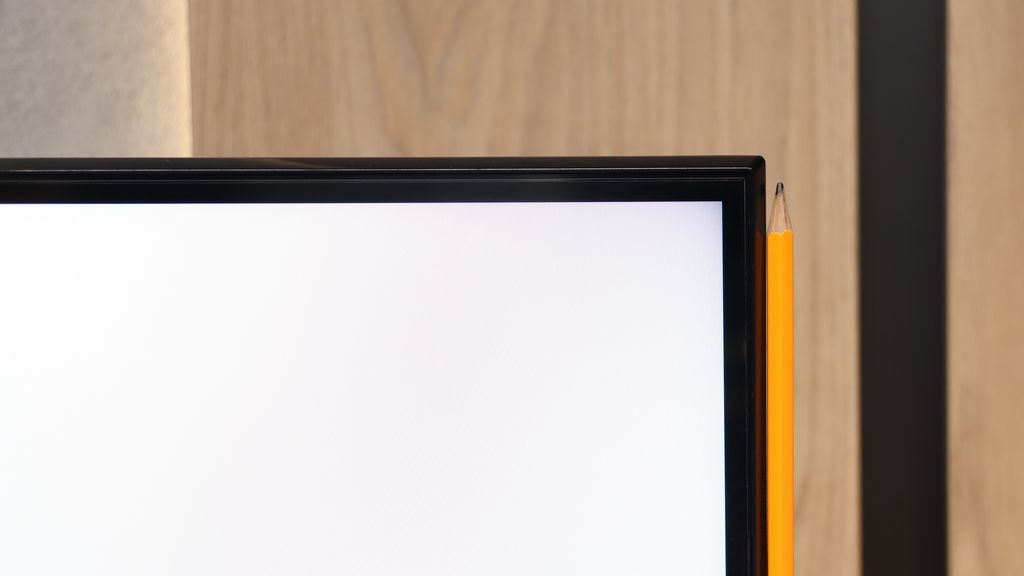
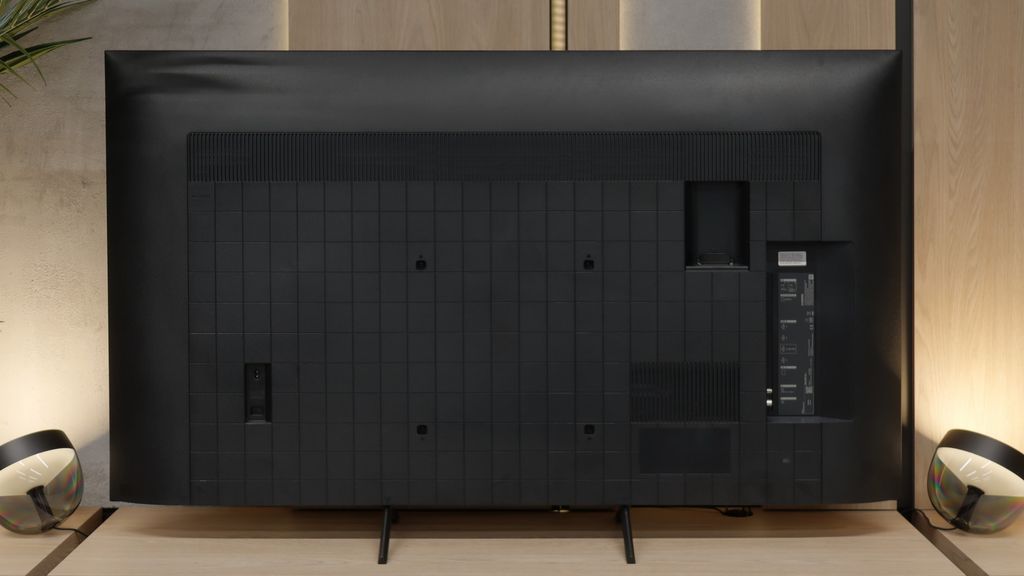
Contrast and black detail
7.5/10
2.2/10
Local dimming function: Yes, number of zones: 220 (10 x 22)
Local dimming function: No
Contrast:

Result
278,000:1

Result
28,800:1

Result
11,100:1

Result
10,800:1

Result
6,250:1

Result
1,150:1

Result
1,150:1

Result
1,050:1

Result
1,050:1

Result
900:1
Halo effect and black detail visibility:

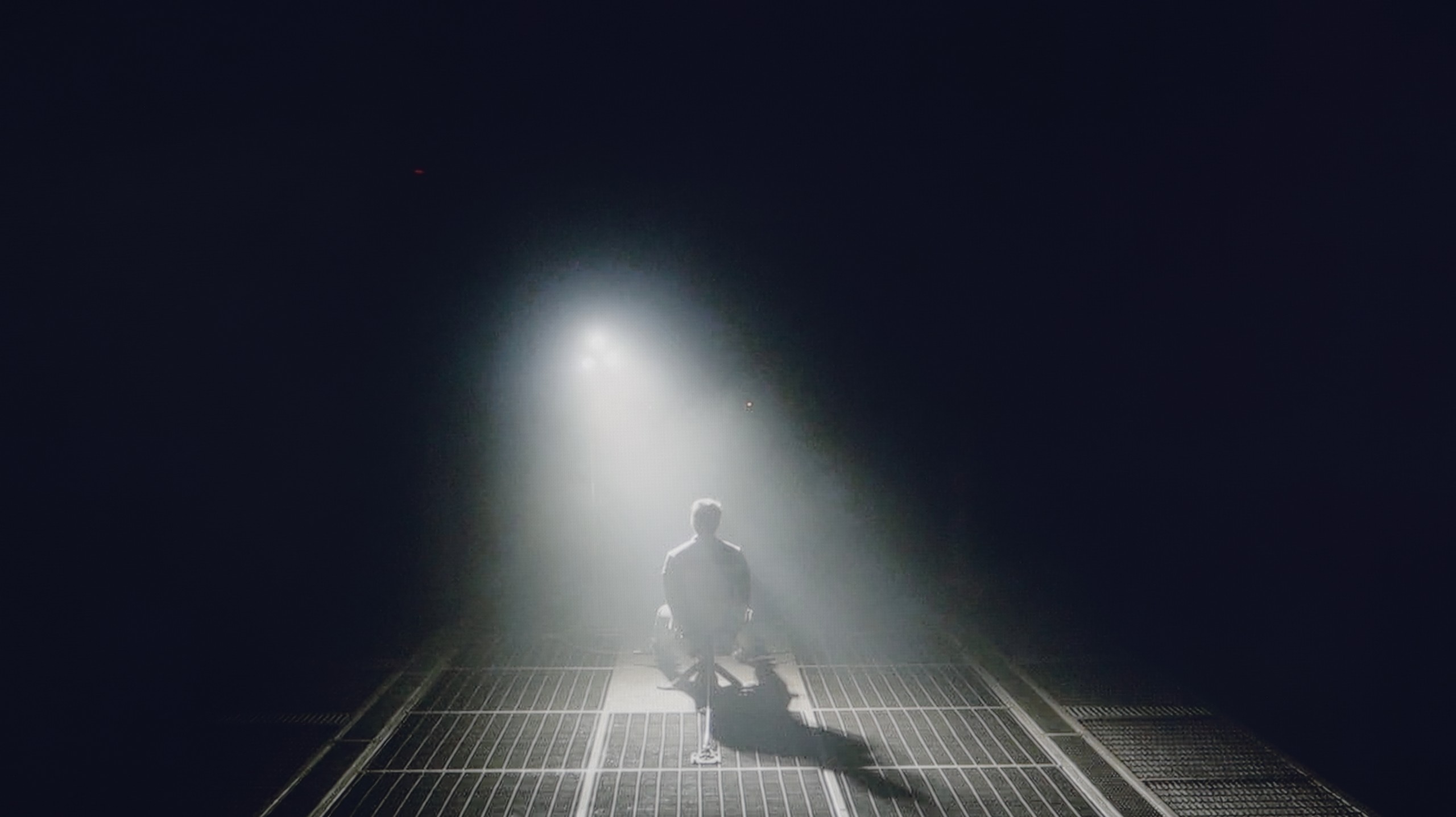
The U7Q is a television with Mini-LED backlighting – just like the PRO version. The difference? The version without the suffix simply has fewer dimming zones. In our 65-inch model with a VA panel, we counted 220 of them. And although this doesn't make as much of an impression as in the U7Q PRO, it still looks very good on paper for this price range. Alright, but how does it perform in practice? Surprisingly well. The contrast in the U7Q can reach up to 300,000:1, which provides a really solid black effect. In many scenes, it's hard to find fault – the image has depth, and the highlights are well separated. Of course, Mini-LED is not OLED – so there are certain limitations. In very challenging scenes with a lot of dark details, the television sometimes either "eats" them, leaving a nice black, or slightly brightens the background, which can cause a halo effect. This is normal in this technology and must be taken into account. Despite these minor drawbacks – the contrast in the U7Q performs really well.
Bravia 3 in most variants, including the 65-inch model we tested, uses an IPS panel and unfortunately, this is not the best news for those who value depth of image and truly velvety blacks. This technology has its advantages, as it offers decent viewing angles, but this comes at the cost of very low contrast, which is especially noticeable during evening screenings when we expect the screen to go dark where it should. However, this is not the end of the list of problems. Our unit also showed noticeable inconsistencies in black levels, which exacerbate the effect of its shallowness. For example, in the scene with the helicopter, the light bleed in the corners of the screen and noticeable vignetting are clearly visible.
It’s hard not to think that even a simple local dimming system could save the situation and add a bit of drama to the picture, which is lacking here. Unfortunately, Sony did not opt for such a solution and as a result, we have a repeat of last year's performance. Bravia 3 is therefore not a television that will enchant with cinematic depth of black. At night, instead of intense black, we will rather see gray pretending to be darkness, which may disappoint more demanding viewers.
HDR effect quality
4.6/10
4.6/10
Luminance measurements in HDR:

Result
521 nit

Result
160 nit

Result
351 nit

Result
98 nit

Result
674 nit

Result
316 nit

Result
327 nit

Result
369 nit

Result
236 nit

Result
379 nit
Scene from the movie “Pan” (about 2800 nits)

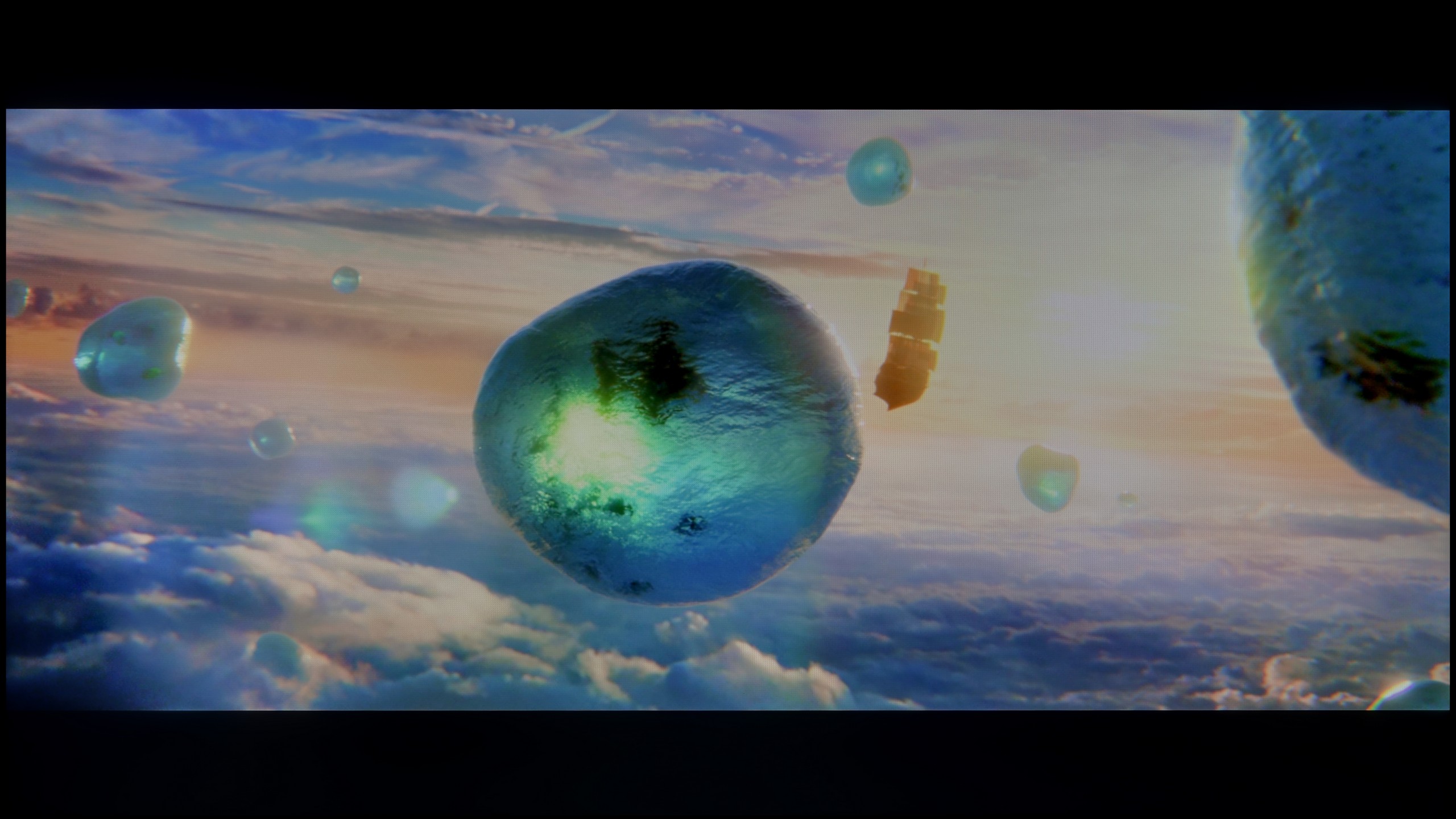
Scene from the movie “Billy Lynn” (about 1100 nits)


Static HDR10


Dynamic: Dolby Vision
Dynamic: Dolby Vision


HDR luminance chart:
SONY BRAVIA 3
HDR luminance
Hisense U7Q
HDR luminance
Since the algorithms responsible for blacks are performing quite well, we expected a similarly good effect when it comes to brightness and overall HDR quality. Unfortunately – here we have to disappoint you a bit.
The U7Q is quite a bright TV – in optimal conditions, it can reach around 800 nits, which indeed impresses on some screens, especially in scenes like those from the movie The Meg. Bright segments can really shine, and the HDR effect is noticeable. The problem arises when very small, bright elements appear on a dark background – for example, in Sicario 2 or in the second scene of the movie Life of Pi. In such moments, the dimming algorithms operate too aggressively. Yes, the blacks look great then, but the brightest points can almost completely fade, causing the HDR effect to disappear and details to be barely visible. That's just the nature of this technology in this price segment.
As a consolation, it's worth adding that the U7Q is advertised as a QLED TV (in practice, a PFS layer is used, which works very similarly), and it is indeed capable of displaying a wide color palette – with DCI-P3 coverage at around 94%, that's a very good result for this class.
Bravia 3 does not hide the fact that it belongs to the group of televisions that are rather modest in terms of brightness. Our measurements showed around 370 nits, which is a value balancing on the borderline where one can still speak of any HDR effect. For some, this is an acceptable level; for others, it is rather typical for SDR materials, where spectacular highlights or vivid contrasts are not expected. The impression is that this is not a television for those focused on the highest image quality in demanding film content. However, this does not mean that we won't find any advantages here. Compared to its predecessor, the X75WL, Bravia 3 has gained an additional PFS filter, functioning similarly to solutions known from QLED technology. Thanks to this, the DCI-P3 color gamut has been significantly expanded and reaches over 91 percent, which in practice provides more saturated colors and a more pleasant image texture. As a result, even everyday content looks a bit livelier, and movies and series can surprise with their colorful presentations, despite the limitations in brightness itself.
Factory color reproduction
6.3/10
5.8/10


Factory Mode
After calibration


Factory Mode
After calibration
We tested the U7Q in the best possible picture mode, which is Filmmaker Mode. This mode is supposed to provide the most "filmic" experience and fidelity to the creators' intent – right out of the box. Unfortunately, even this professionally sounding name does not guarantee a perfect picture.
In our unit, the problem lay in a poorly set white balance. Both in HD and 4K content, the image had too much blue and red, giving the screen a slightly pinkish hue. It didn't look terrible, but it was noticeable – especially in bright scenes and white backgrounds. This alone could have been forgiven, but the biggest issue is the management of brightness in HDR content. The EOTF curve from the measurements confirms what we saw earlier during the scene tests: the television often dims the smallest bright elements too much, causing them to almost disappear, or conversely – excessively brightens the brightest ones, affecting the naturalness of the image.
We primarily tested the Sony Bravia 3 in movie mode, which immediately proved to be the best choice among the factory settings. The picture is not perfect, but compared to the eco mode that the TV suggests right out of the box, the difference is significant and for the better. In movie mode, one can notice a certain problem—the image seems too warm, which results from a lack of blue in the white balance. Despite this, in SDR content, the final effect can still be considered quite decent and satisfying for everyday viewing. Much more serious errors occur in HDR materials. The Color Checker analysis showed significant deviations, and poor brightness management combined with limited color gamut coverage further exposes the shortcomings of the image in this mode. All of this makes HDR on the Bravia 3 look unconvincing and can spoil the impression left by the quite decent SDR content settings. Fortunately, this is not a situation without a solution. Various errors can be somewhat mitigated, and some can even be completely corrected through professional calibration. Therefore, we decided to check how the TV would perform after such adjustments.
Color reproduction after calibration
7.4/10
7.5/10

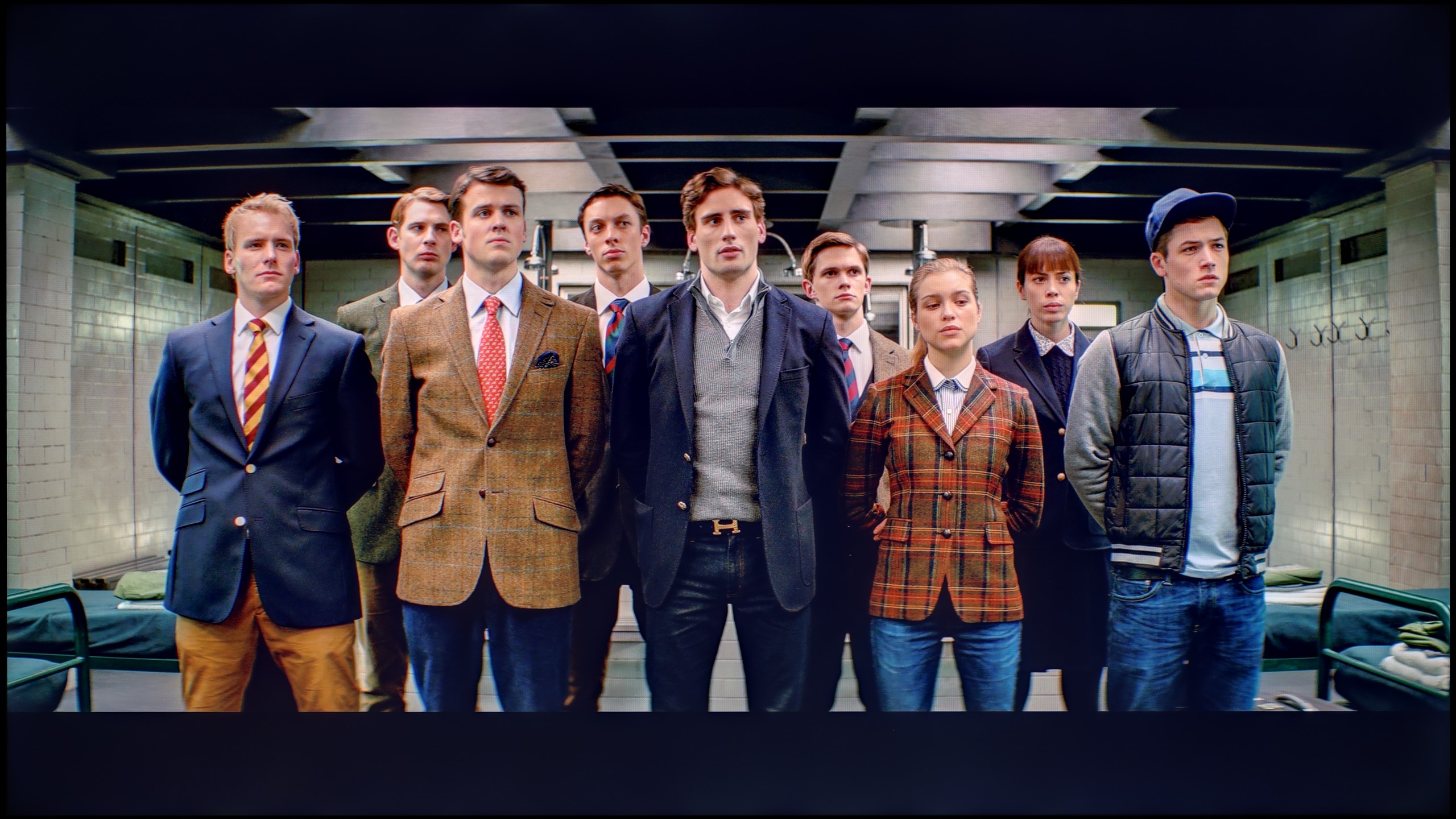


Thanks to specialized tools, we managed to correct the color quality in SDR content to nearly perfection. In materials with lower dynamics, delta E errors dropped below 0.5, which can be considered an almost reference result. The image on television, YouTube, or classic Full HD looks really good after calibration. Well, but where couldn’t we improve the image so easily? Primarily, it concerns HDR quality content. While we managed to somewhat "tame" the white balance and eliminate pink hues in most scenes, unfortunately, we did not have full control over brightness management. We set the local dimming settings according to the best observations – SDR: Medium, HDR: High – but the U7Q still did everything a bit its own way. There were still cases of overly strong dimming or brightening of details that the calibration simply couldn't eliminate. And although the overall reception of the content is much better, it must be taken into account that the U7Q will always have something to say at the end "but."
The calibration allowed us to extract significantly more from ChooseTV 3 than we could have expected at the beginning. First and foremost, we managed to address the shortage of blue color, which previously caused a noticeable warming of the image. After a slight adjustment in white balance, most of the errors in Color Checker measurements for SDR content practically disappeared. The shades of white gained a natural quality, and brightness management in gamma stabilized to a level that is nearly perfect, not exceeding the threshold of human eye perception. Therefore, it can be confidently said that in SDR content, after a few tweaks in settings, ChooseTV 3 performs really excellently. HDR content, however, fares much worse, although it is still definitely better than before calibration. The white balance has been corrected, but the limitations of the IPS panel are insurmountable. The lack of local dimming means that even the smallest elements can be overexposed, which immediately stands out. Color-wise, the effect has also improved, although it is far from ideal—many errors still exceed the threshold of four or even five delta E units, meaning they remain visible to the human eye. It was already clear before that ChooseTV 3 is not a television designed to amaze with HDR quality. Nonetheless, it is gratifying that in SDR content, after calibration, the image can look really great, and in this category, the television pleasantly surprised us.
Smoothness of tonal transitions
9.9/10
8/10



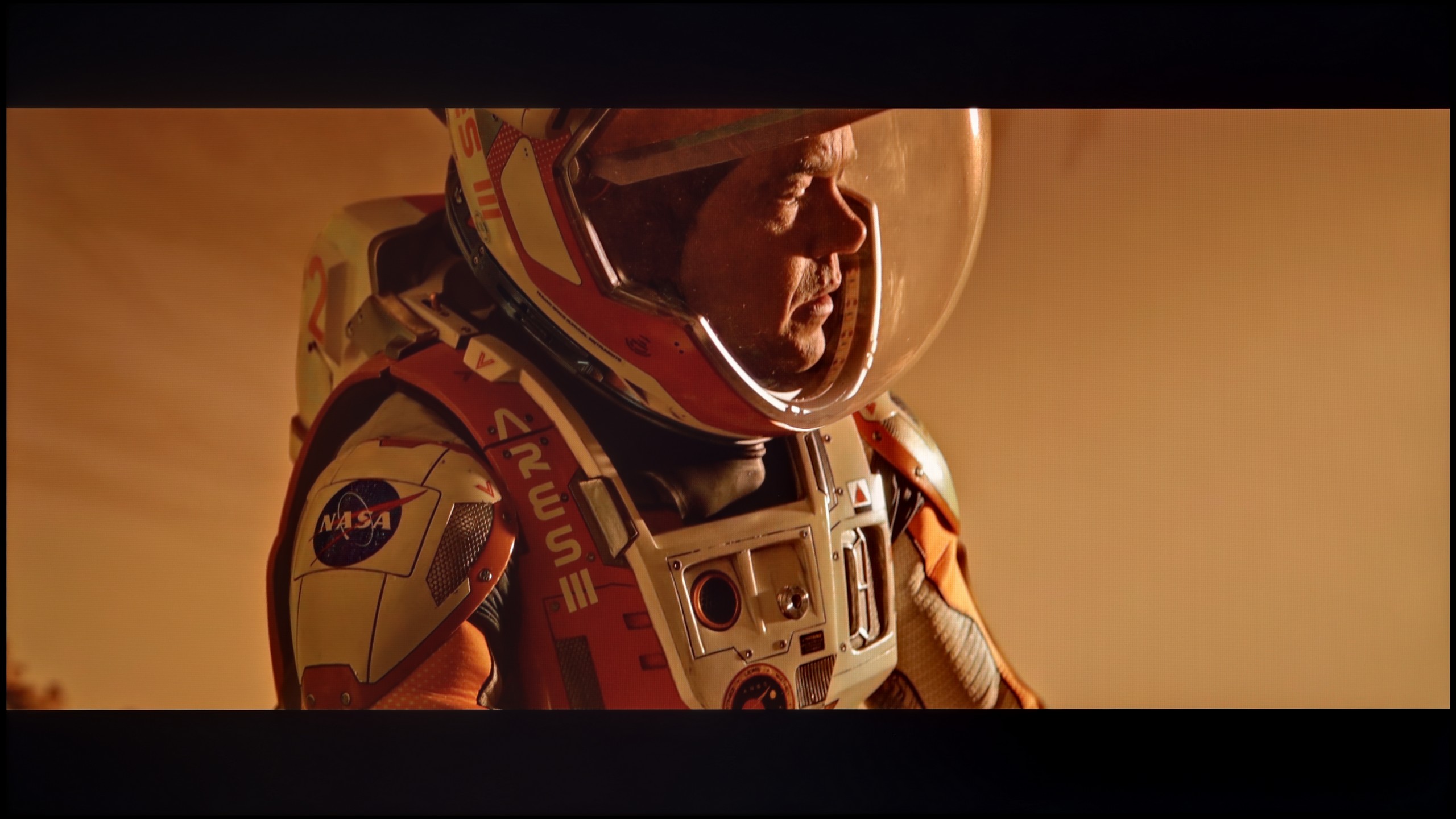

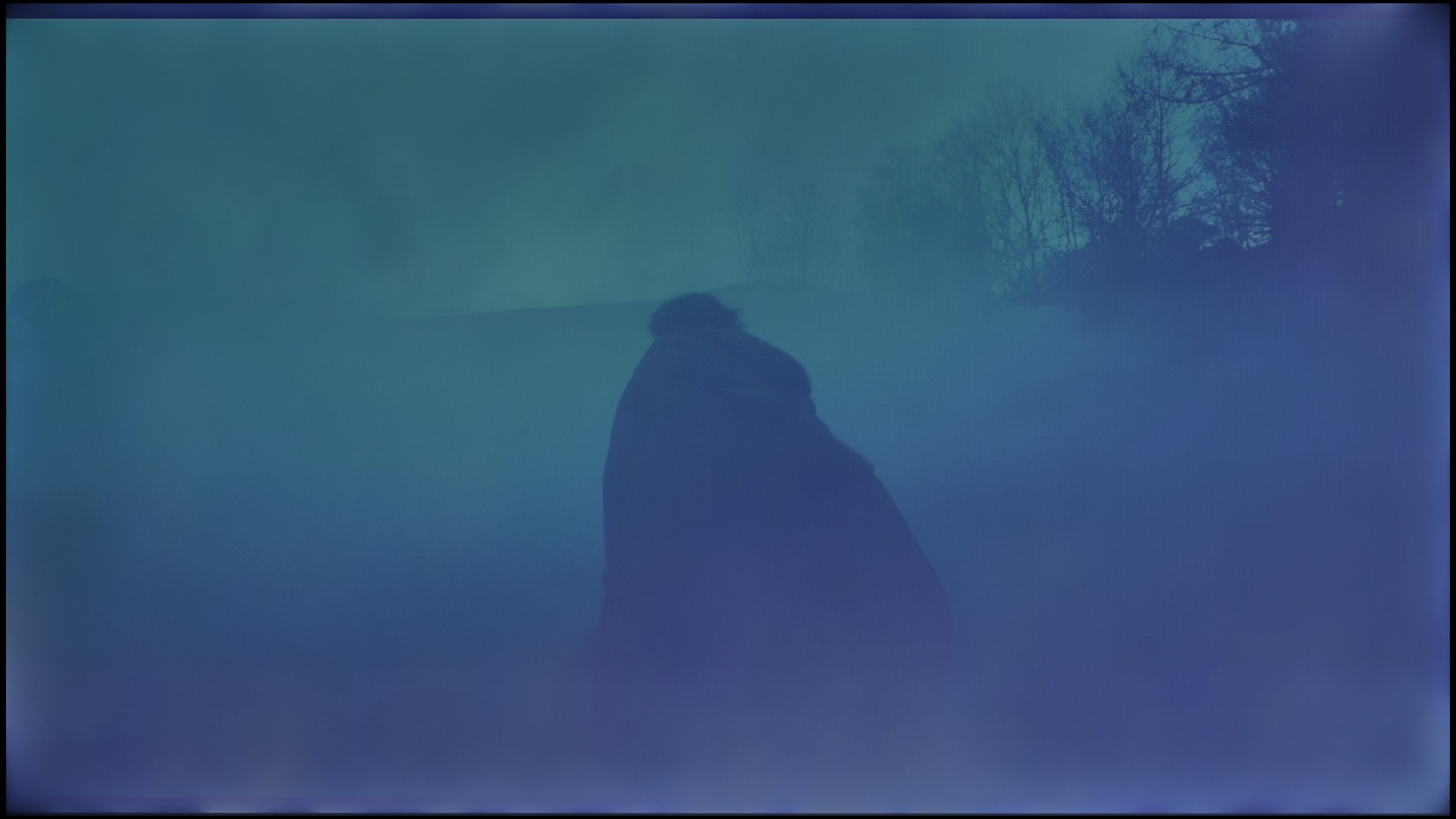

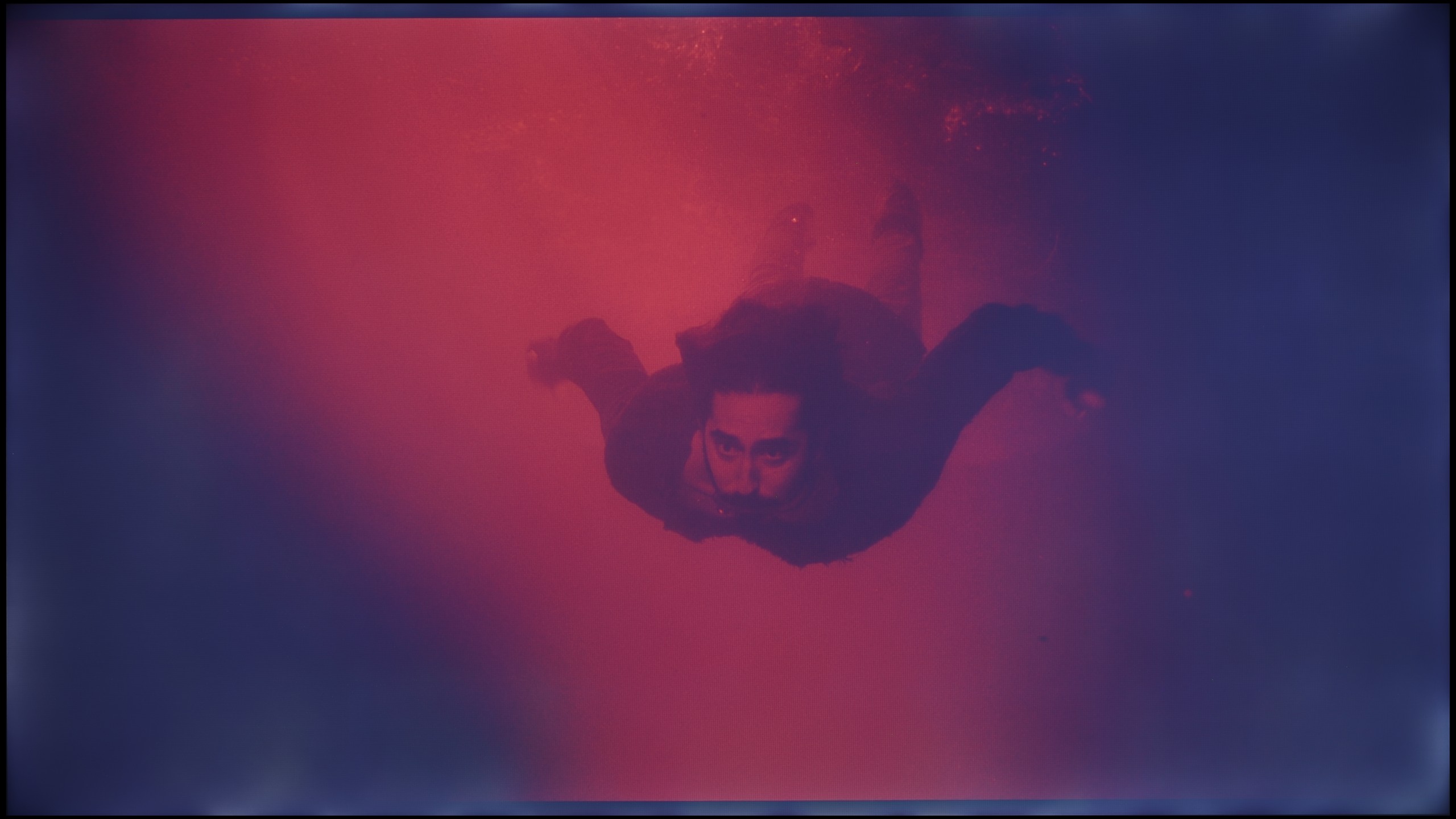




The U7Q performs exceptionally well when it comes to tonal transitions – we can confidently say that it reaches almost reference level, which is why in this category, the TV receives one of the highest possible ratings from us. The color blends are smooth, clean, and without visible bands. In most scenes, everything looks simply perfect, and any potential minor imperfections may only appear in very specific shots – although we hardly noticed them during testing.
In terms of the fluidity of tonal transitions, Bravia 3 performs really well. In brighter scenes, we did not notice any significant errors – the screen handles color blending almost perfectly and does not create artificial contours that can spoil the viewing experience. Also, in darker segments, there are no major issues with color gradation, though another problem arises here. Strong brightening and uneven backlighting of the panel in dark scenes make it difficult to unequivocally evaluate the gradation itself, as the effect is spoiled by the unevenness of the image. However, when we focus solely on color blending, the result can be considered very good.
Image scaling and smoothness of tonal transitions
6/10
7/10
Smooth transition function

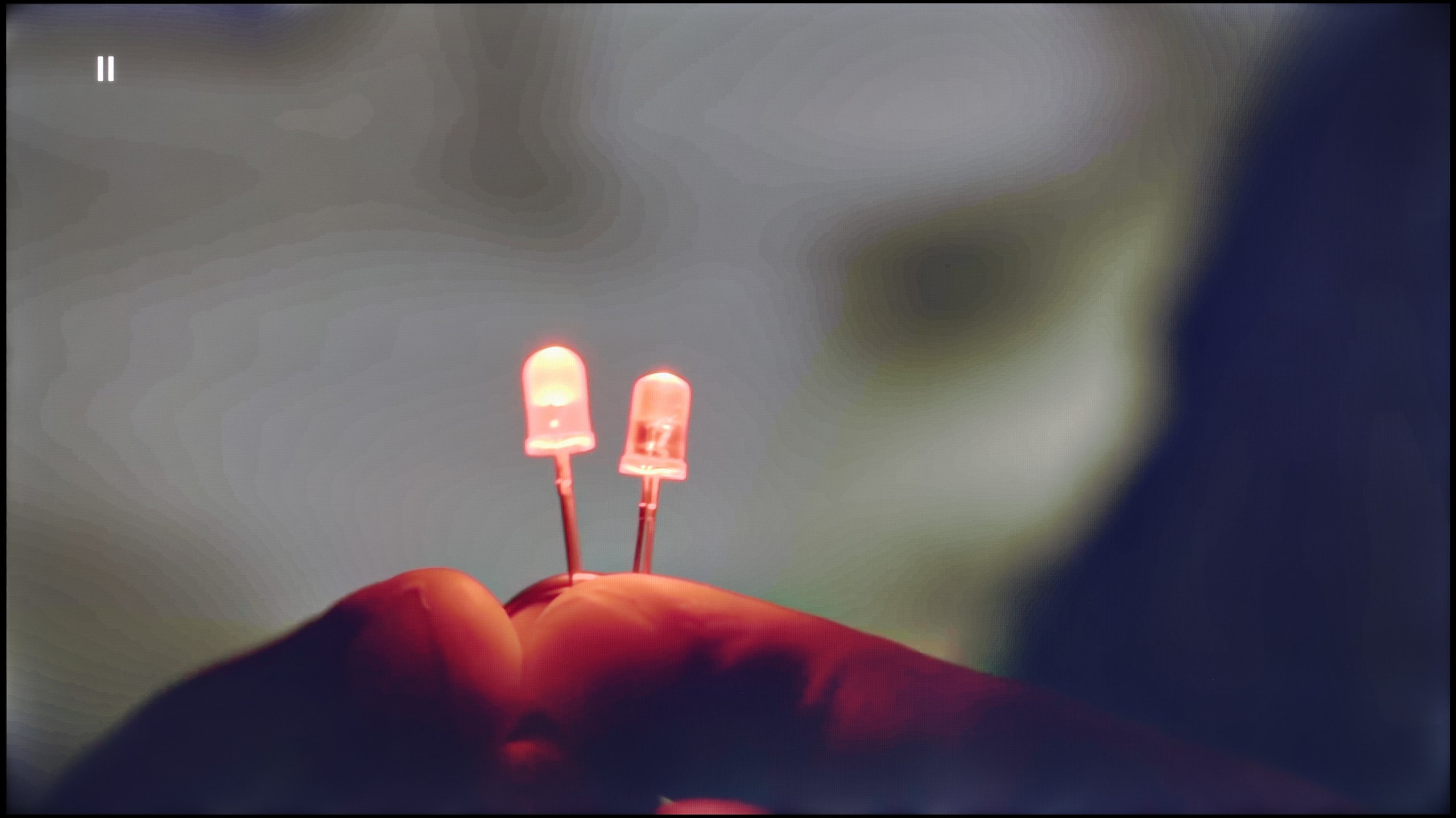
Image without overscan on the SD signal


There are situations where we would like to smooth out tonal transitions a bit, especially in older materials – those that have limited source quality. The U7Q is equipped with a feature called “Smooth and Gradient Image,” but unfortunately… it works very poorly. In the “Low” option, the effects are practically unnoticeable, and other settings smooth out details but do not improve tonal transitions. The only plus is that the feature does not interfere with film grain, so it does not ruin the natural structure of the image.
Fortunately, content scaling performs quite well. The image is not overly sharpened, there is no artificial clarity – and although it is known that this is not the level of high-end televisions, the U7Q handles displaying really old content in a completely acceptable manner without any problem.
Bravia 3 brings something more to the Sony television family than just a common name. It stands out primarily for its ability to improve the quality of weaker materials thanks to the applied processor. Of course, we won't find the advanced XR chip known from more expensive models here, but it must be acknowledged that the image at a lower resolution looked surprisingly good. Scaling worked effectively, and most parts of the screen were free from the typical excessive jagged edges found in budget constructions.
The feature that enhances the fluidity of tonal transitions is also worth noting. In the high setting, it works really well, effectively masking the imperfections of gradation without significant loss of detail. It does happen that the algorithm overly smooths elements that should remain sharp – for example, faces – however, in overall terms, the effect is beneficial. The best results were achieved precisely at the highest setting, and this option could be recommended to those watching lower-quality content.
Blur and motion smoothness
7.5/10
5/10

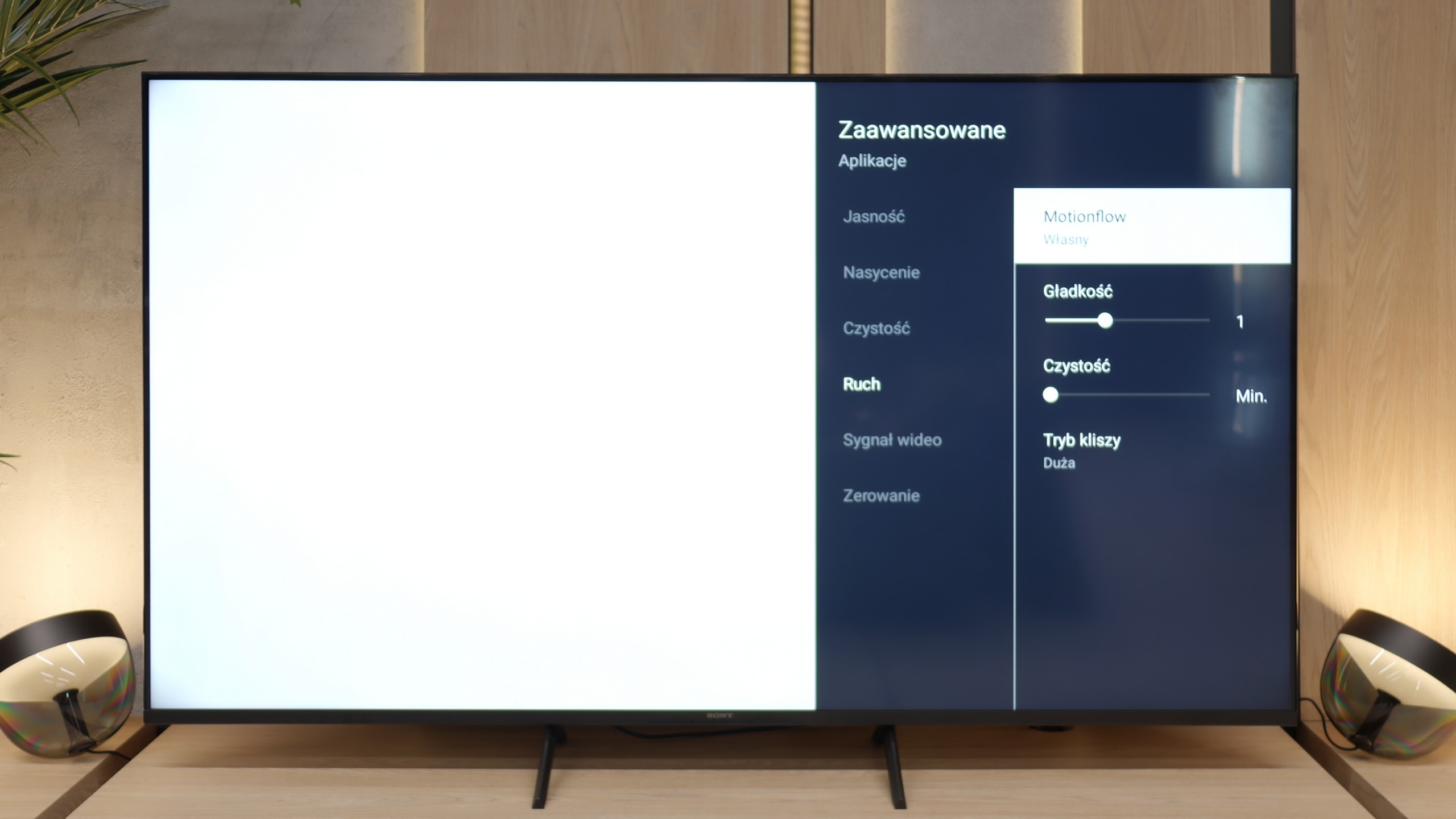
Blur (native resolution, maximum refresh rate):



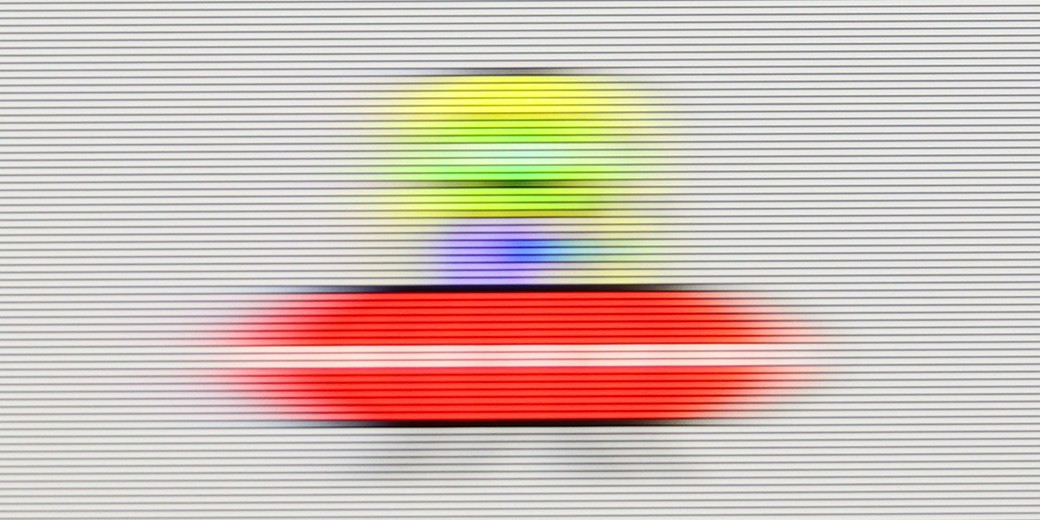
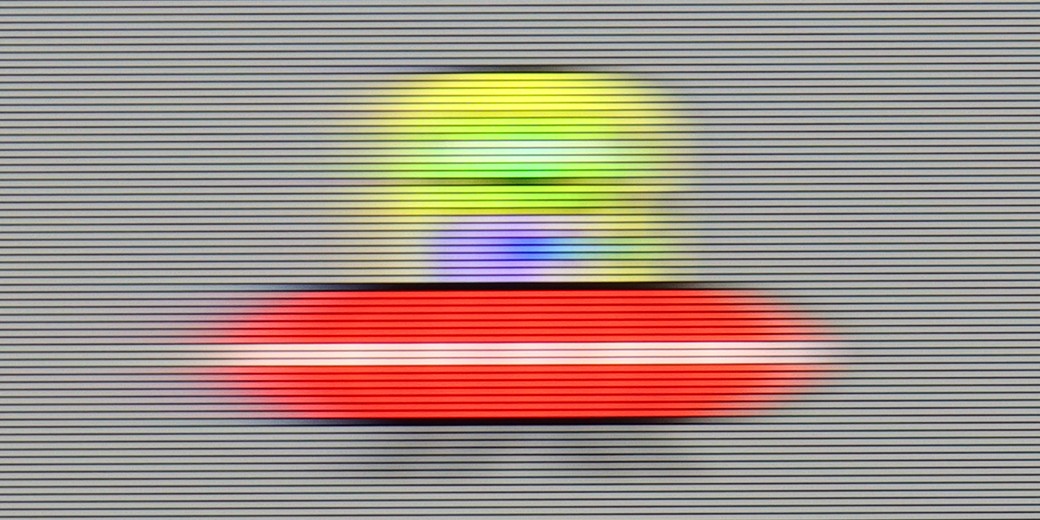
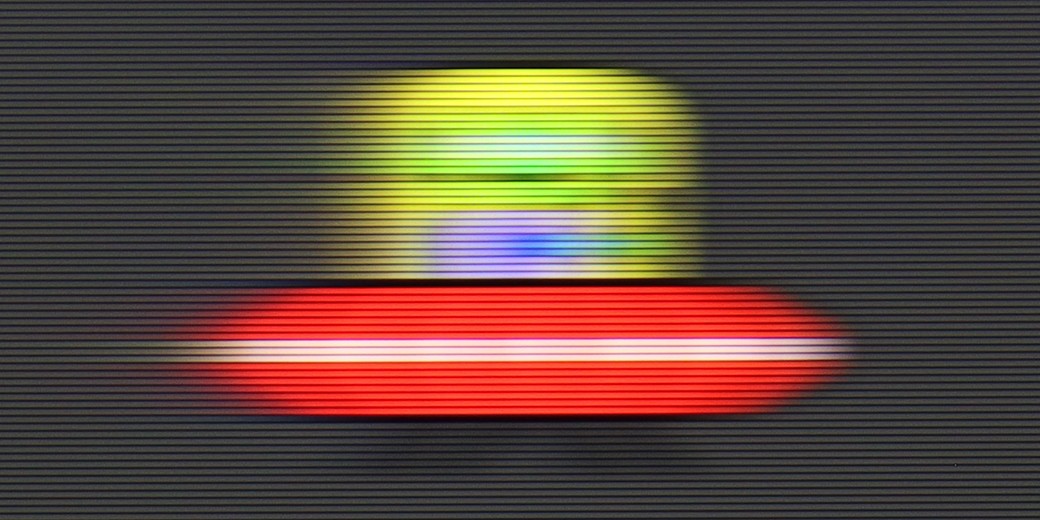
Blur (BFI function enabled):



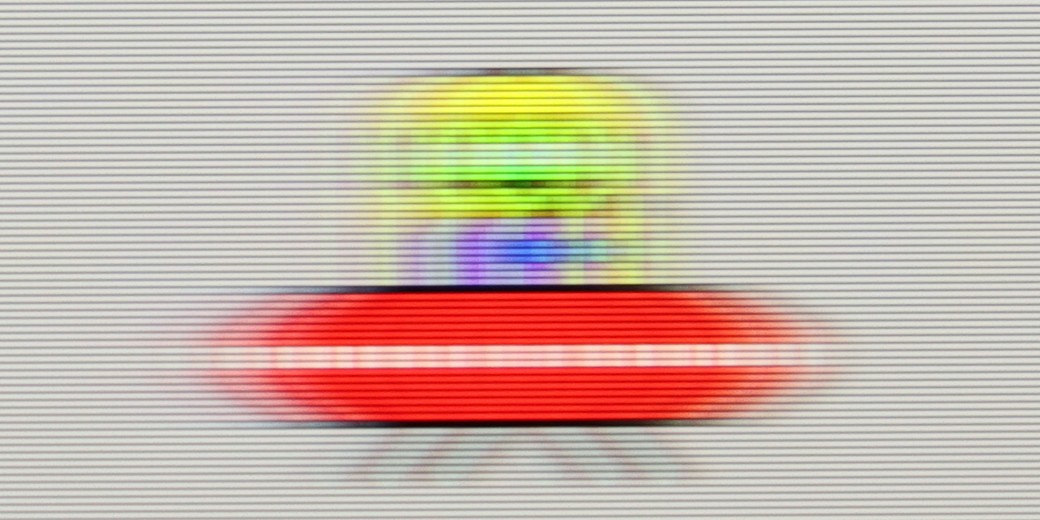
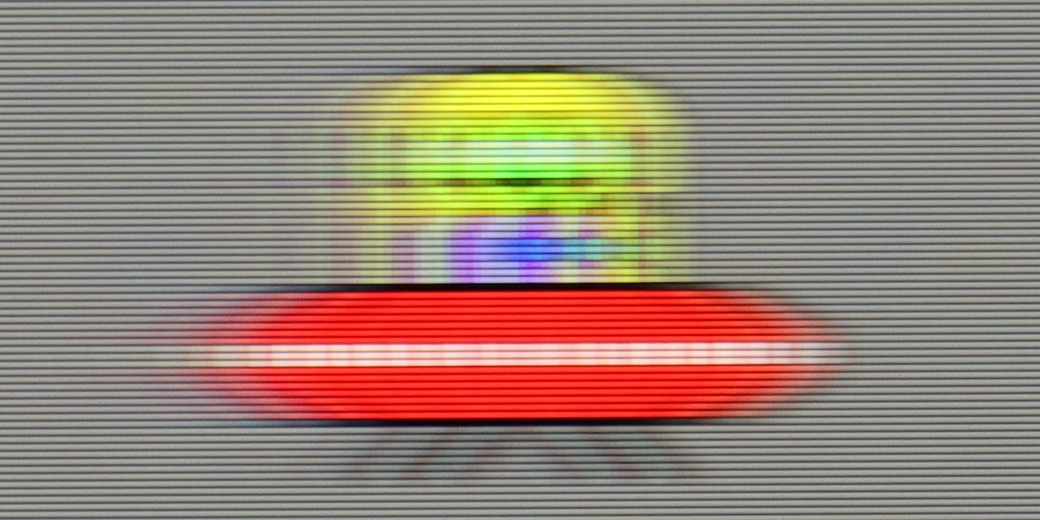
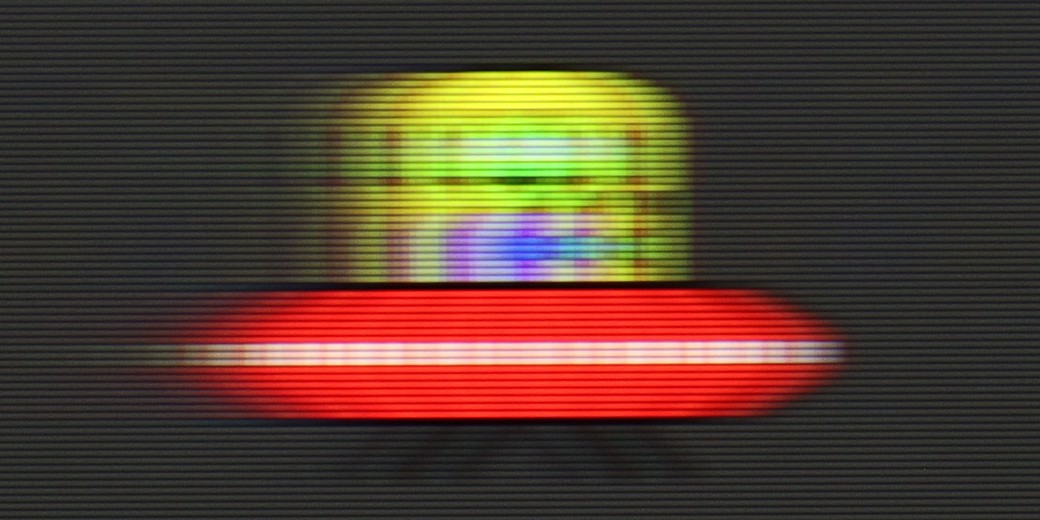
Smużenie (1080p 240Hz):



Smużenie ():
U7Q is truly a fast television, similar to its more powerful version "PRO". At a resolution of 4K, it supports up to 144 Hz refresh rate, and if someone wants even more – in Full HD you can achieve up to 240 Hz! This will mainly benefit PC gamers, but it’s worth appreciating – this is a rare feature in this price segment. Right from the start, it’s clear that U7Q was created with dynamic content in mind, such as games or sports. In films, we are not left "out in the cold" either – U7Q offers the "Ultra Motion Smoothness" feature, where using two sliders you can adjust whether you want a smoother, theatrical image, or something closer to a cinematic style with a visible frame. It’s good that, like with most manufacturers, we have a choice here and can adjust it to our own preferences.
The fluidity of motion has never been a strong point of TVs equipped with 60 Hz panels, and the Bravia 3 is no exception. Nevertheless, Sony has added something that might appeal to those who are more sensitive to the way images are displayed. We are talking about the proprietary Motion Flow motion smoother, which offers users a lot of adjustment options. Thanks to it, one can make the image smoother, even theatrical, or stick to a more cinematic style with the characteristic stuttering that many simply associate with the film atmosphere. These features work with content at lower frame rates, such as movies and series recorded at 24 or 30 frames per second, which are the materials we encounter on a daily basis. It is precisely in this area that the motion smoother proves to be one of the most important features in everyday use of the television, and here the Bravia 3 performs really well.
Console compatibility and gaming features
8.5/10
4/10
- ALLM
- VRR
- VRR range48 - 240Hz
- Dolby Vision Game Mode
- Correct implementation of HGIG
- 1080p@120Hz
- 1440p@120Hz
- 4K@120Hz
- Game bar

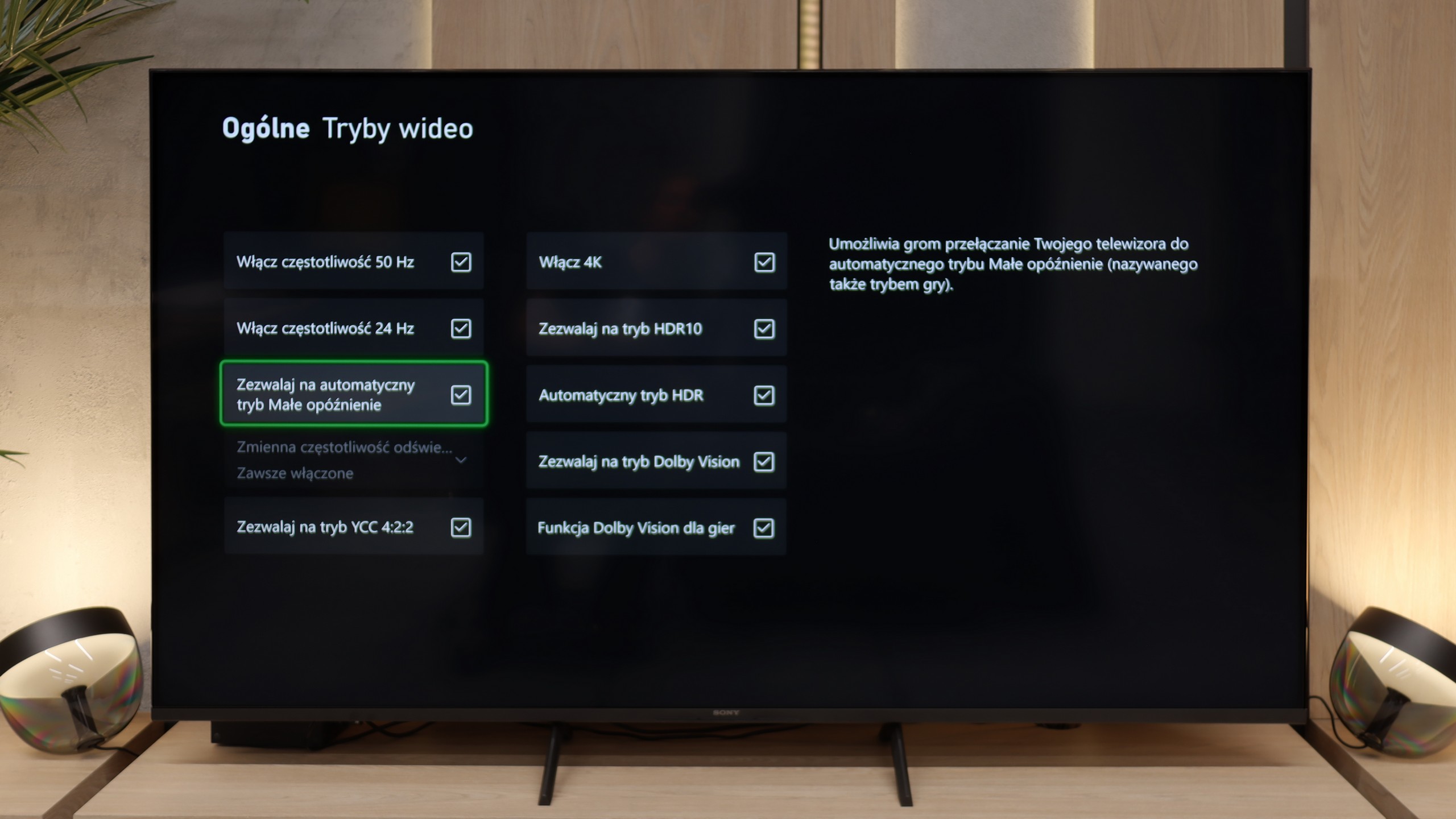

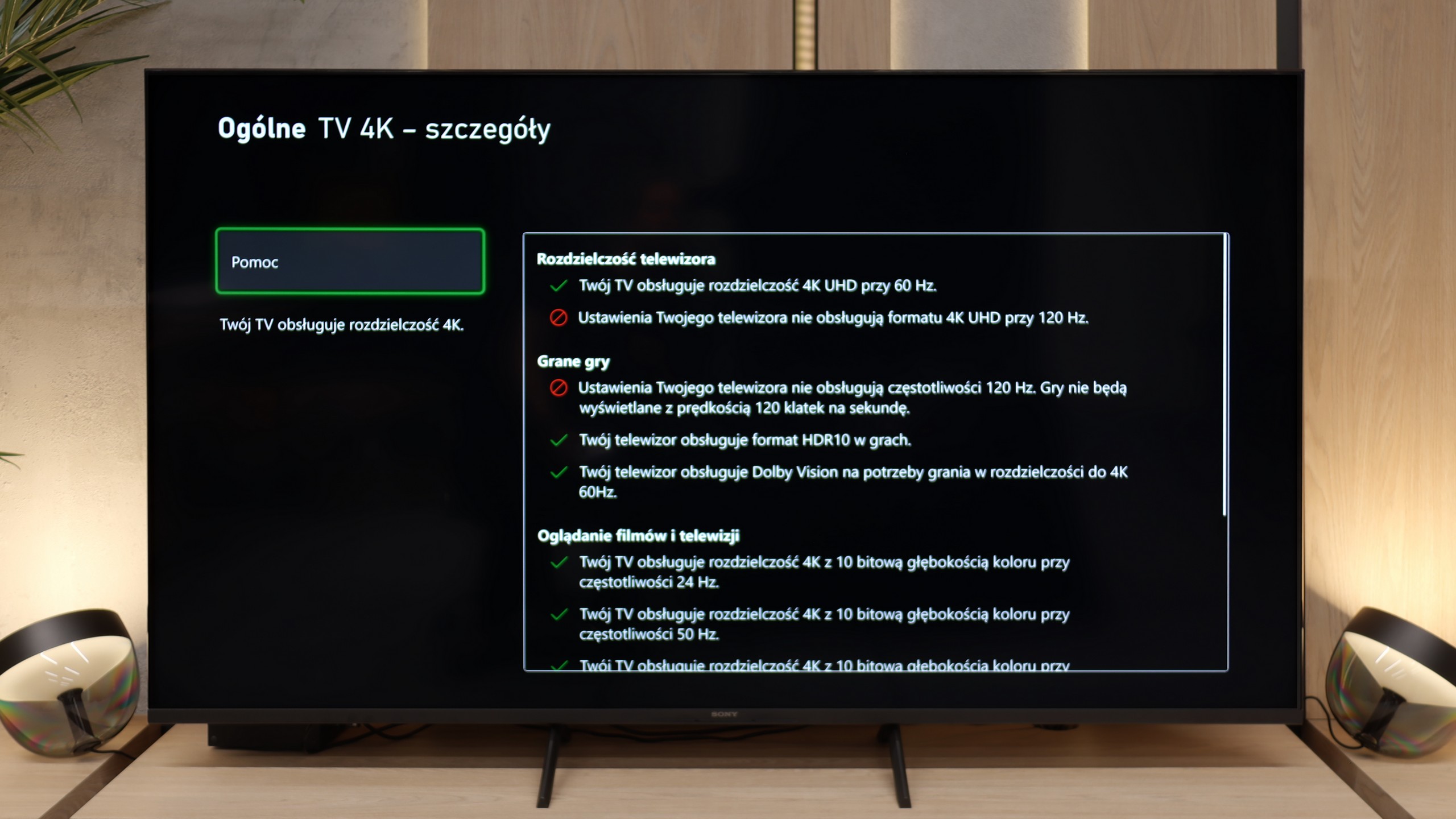

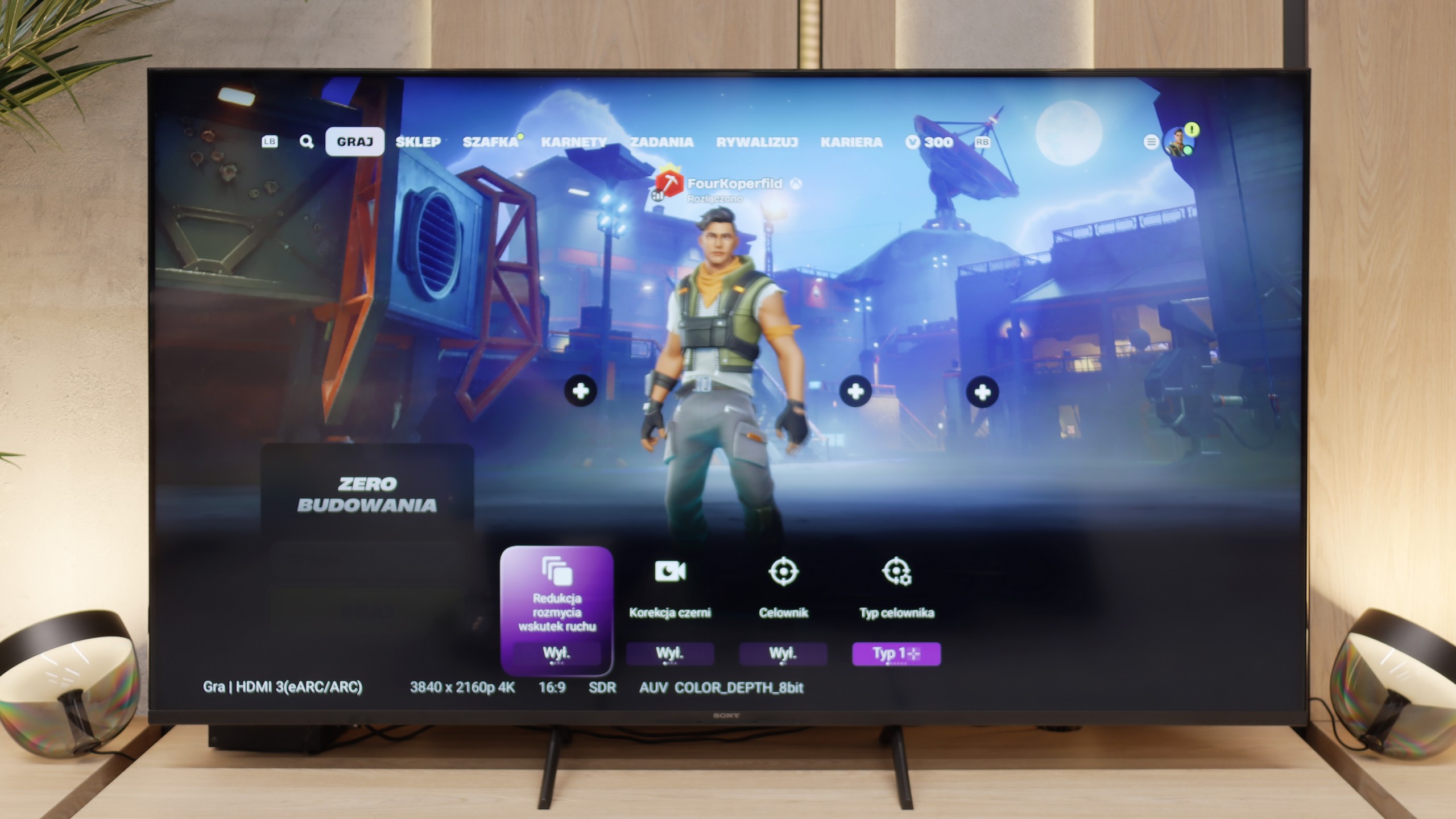

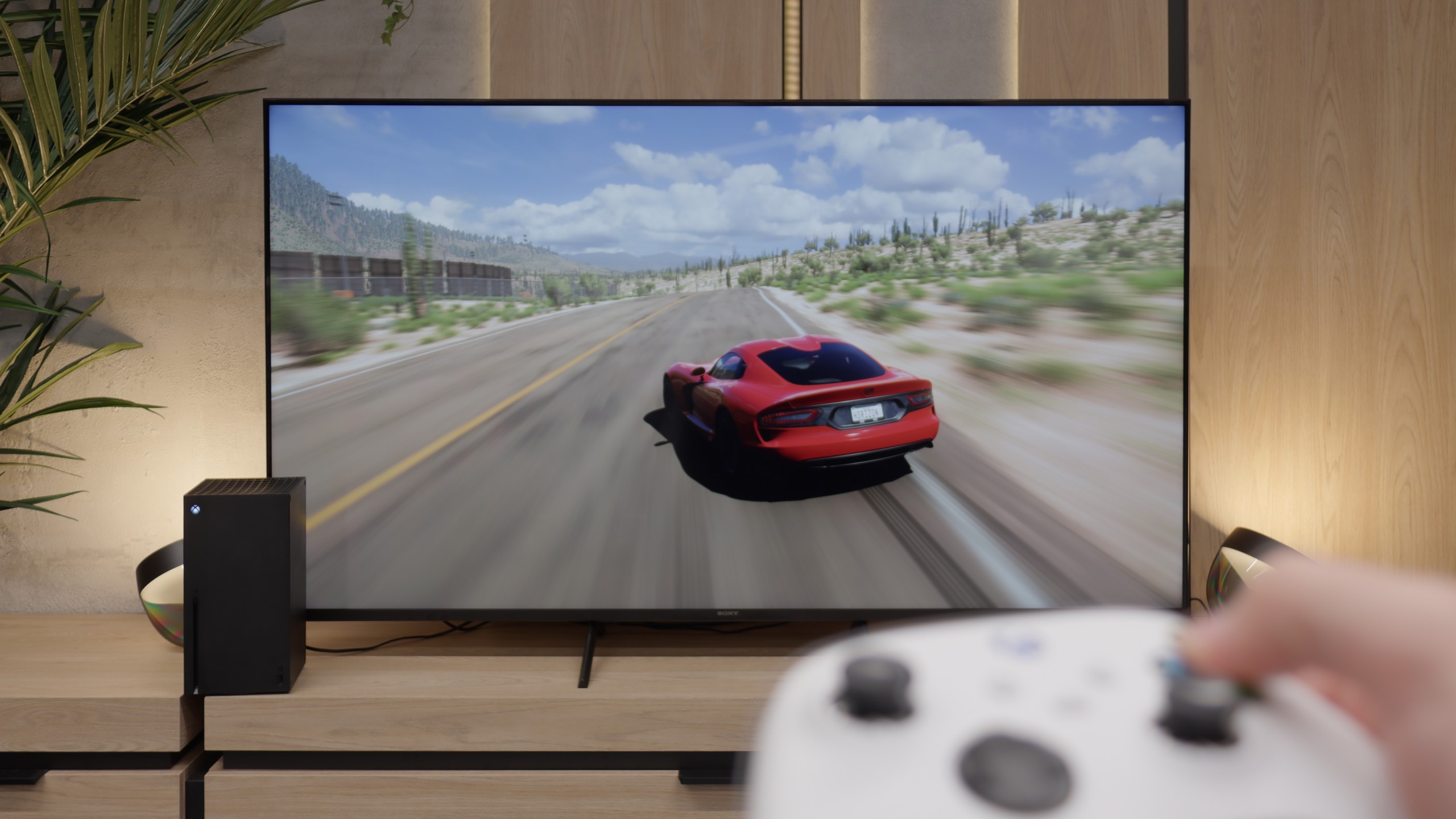
The Hisense U7Q is a TV designed for gamers – and you can see that right away based on its gaming capabilities. It has practically everything you could wish for: variable refresh rate (VRR) – check, automatic game mode (ALLM) – also check, and high refresh rates of up to 240 Hz in Full HD, as well as support for various resolutions, not just 4K. It's truly a great set of features that makes the U7Q excel in both fast-paced shooters on consoles and more demanding titles on PC. Of course – like in most Hisense models – it lacks a proper implementation of the HGiG function. That's a shame because HGiG allows you to adjust the brightness of the console to the specific TV, which in practice makes displaying HDR games according to the creators' intentions much easier. Without this, you simply have to reckon with certain limitations in the final HDR image in games.
Bravia 3 is not a device for e-sports enthusiasts or fans of late-night marathons with a controller in hand. The lack of 120 Hz refresh rate and HDMI 2.1 ports wraps up the topic before it can even develop. This is a TV for casual gamers who, after work, want to fire up FIFA or racing games, not for someone who measures every frame in a spreadsheet. Nevertheless, Sony has added a few nice extras so it’s not too barren. ALLM works as it should, automatically switching the TV to game mode (low latency). We even find a simple Game Bar here that is clear. However, the biggest curiosity is the PlayStation Portal app. With it, you can launch games from PS5 wirelessly and immediately see them on the TV screen. It sounds great, but it only takes a few minutes to feel significant delays. In our opinion, it’s more of a showcase of capabilities than something usable on a daily basis. If someone really wants to play, it’s better to connect the console with an HDMI cable right away and forget about wireless problems.
Input lag
9.7/10
10/10
SDR
HDR
Dolby Vision
Input lag on the U7Q is really impressive. With 120 Hz content, we recorded around 9 ms, and with 60 Hz – around 17 ms. These are outstanding results that make the TV perform excellently even in dynamic games that require quick reactions. There is hardly anything to criticize here. Of course, as is often the case, the Dolby Vision mode in games seems a bit slower compared to classic SDR or HDR. This will mainly be noticeable for Xbox Series X/S console users, which are the only ones that support Dolby Vision Gaming. Fortunately, input lag still remains below 30 ms, so in practice, this is still an acceptable level even for more demanding gamers.
Here, Bravia 3 shows its best side. Delays drop below 12 milliseconds almost in every resolution and mode, so the response to controller movements is instantaneous and there is no feeling of lag. It feels as if the console and the TV are speaking the same language, without any unnecessary pauses or hesitations. The Dolby Vision Gaming mode deserves special attention. In its predecessor, the X75WL model, using this feature was simply a nightmare – input lag could exceed 100 milliseconds, which effectively took away the enjoyment of gaming. In Bravia 3, this problem has been completely eliminated.
Compatibility with PC
8.6/10
6/10

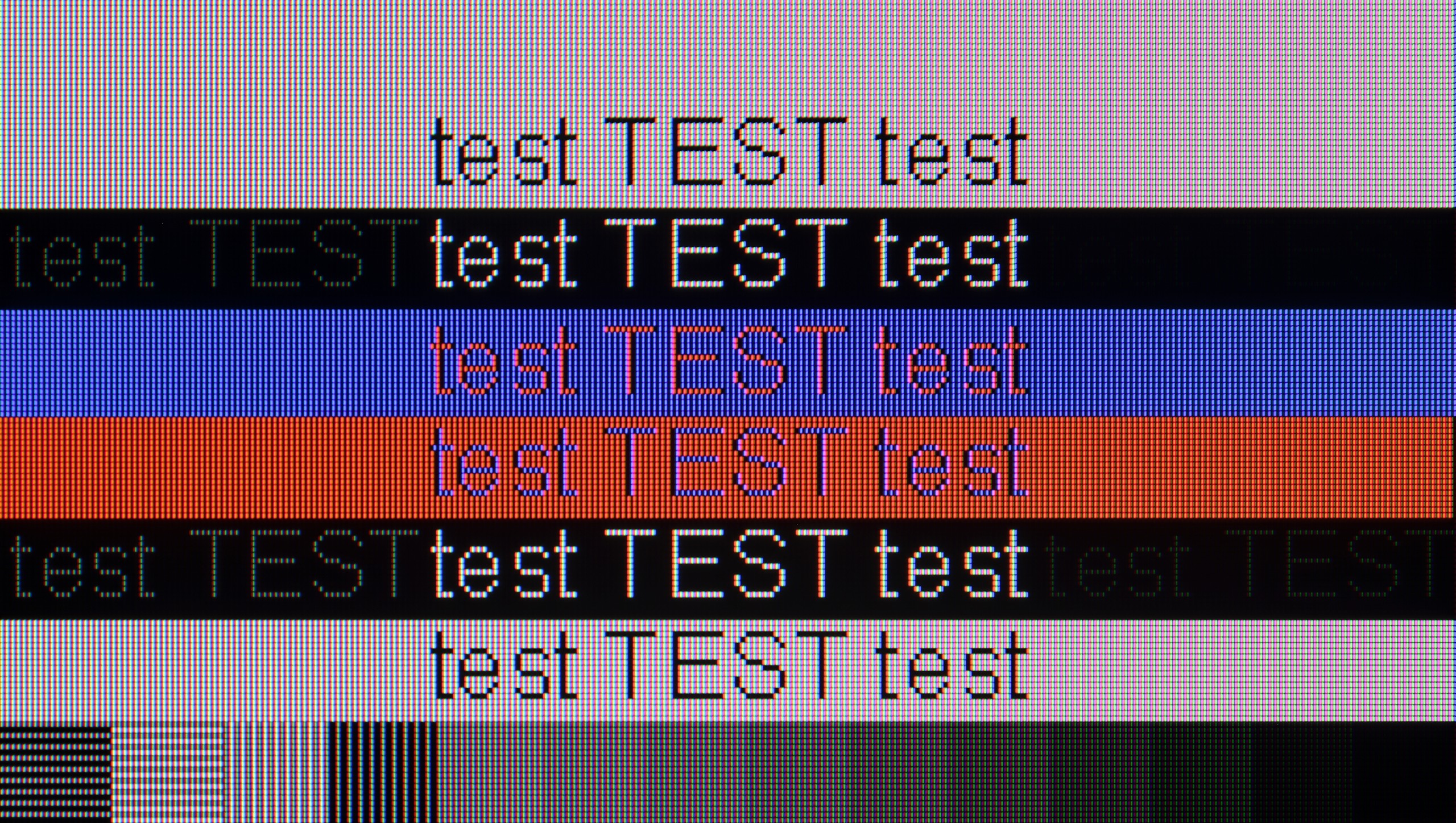
The U7Q communicates excellently with the computer. For gamers, this is great news – we have high refresh rates, low input lag, and G-SYNC support, so gaming from the PC is pure pleasure. But the U7Q also performs well in everyday tasks. If someone uses a computer for text, browsing the internet, or office work – there’s nothing to complain about. The television correctly handles chroma 4:4:4, so fonts look sharp and clear, without blurriness or strange contours. Both lowercase and uppercase letters are simply readable – just as they should be.
The applied IPS matrix, combined with properly functioning 4:4:4 chroma support, ensures that font readability is at an excellent level. Letters appear sharp, regardless of the background color or the content itself, making work with documents or browsing websites easy on the eyes. In this role, the television definitely deserves a very good rating, if not an excellent one, as few models in this budget perform as well. Of course, if we look at the Bravia 3 from a PC gamer's perspective, the picture won't be as rosy. We won't find G-SYNC or Free Sync frame synchronization with graphics cards or high refresh rates here, so for fast-paced computer games, the television is not the best choice. However, in the role of a monitor for work, whether in a home office or a student’s room, it performs excellently, and in this regard, it's really hard to criticize.
Viewing angles
3/10
6.6/10
The viewing angles on the U7Q are rather weak – this is simply a typical characteristic of VA panels. Straight on, everything looks very good: blacks are deep, colors are saturated, and the contrast is high. But just shifting slightly to the side causes the image to start losing quality – colors become washed out, and blacks begin to resemble dark gray. Compared to TVs with IPS panels, the U7Q performs worse, although on the other hand, it makes up for it with better contrast and deeper blacks.
Thanks to the applied IPS matrix, colors do not lose intensity as quickly as with screens based on VA panels. Even when watching television in a larger group, when some people sit at an angle, the image remains clear and does not appear washed out. Of course, this is not the level offered by organic OLED matrices, where the image looks identical from almost every position, but for an LCD television, the viewing angles in the Bravia 3 are among the better ones. This provides a sense of comfort and freedom, especially in larger living rooms or during family screenings, where it is difficult for everyone to sit directly in front of the screen.
TV efficiency during daytime
6.2/10
4.9/10

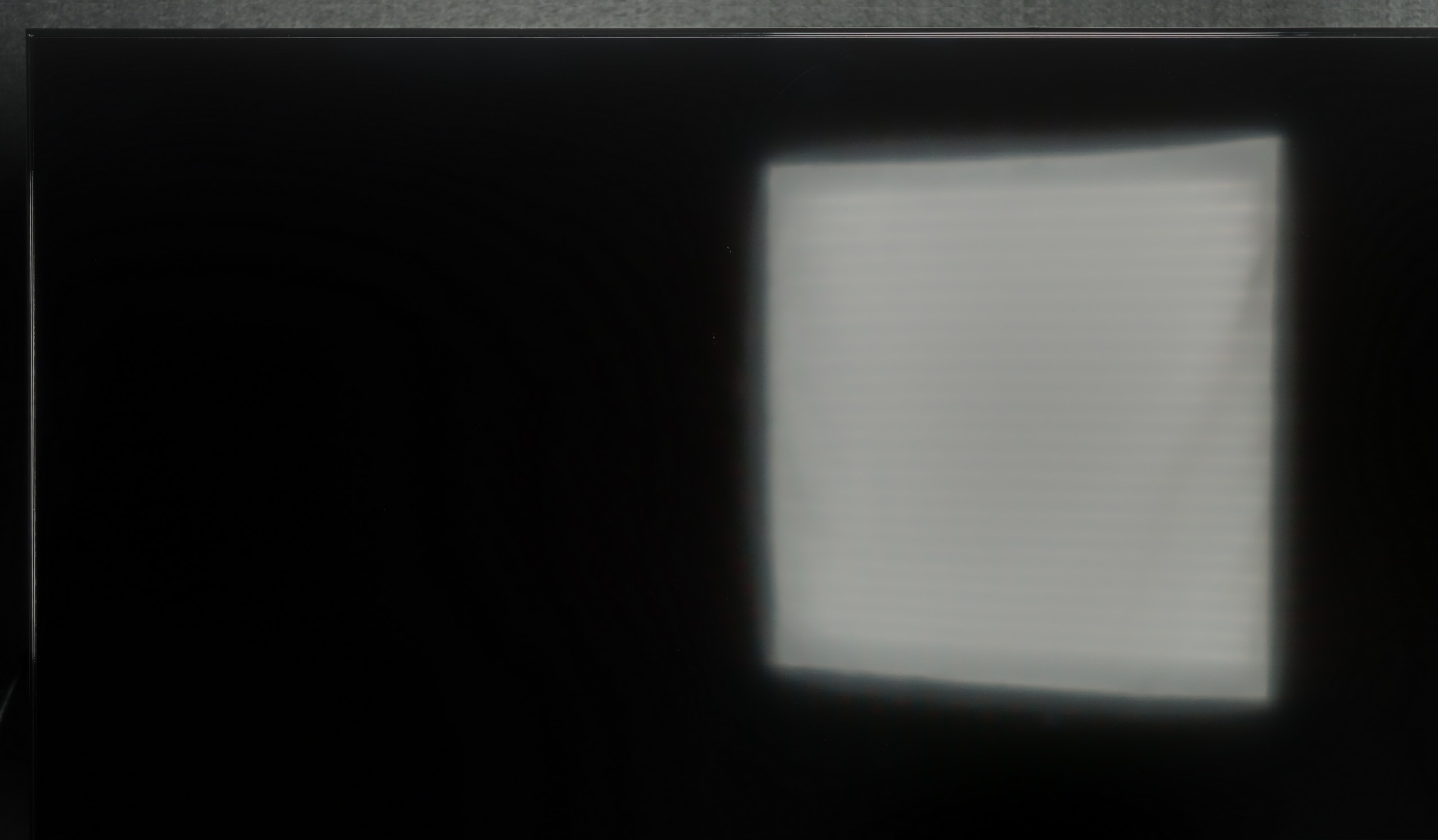

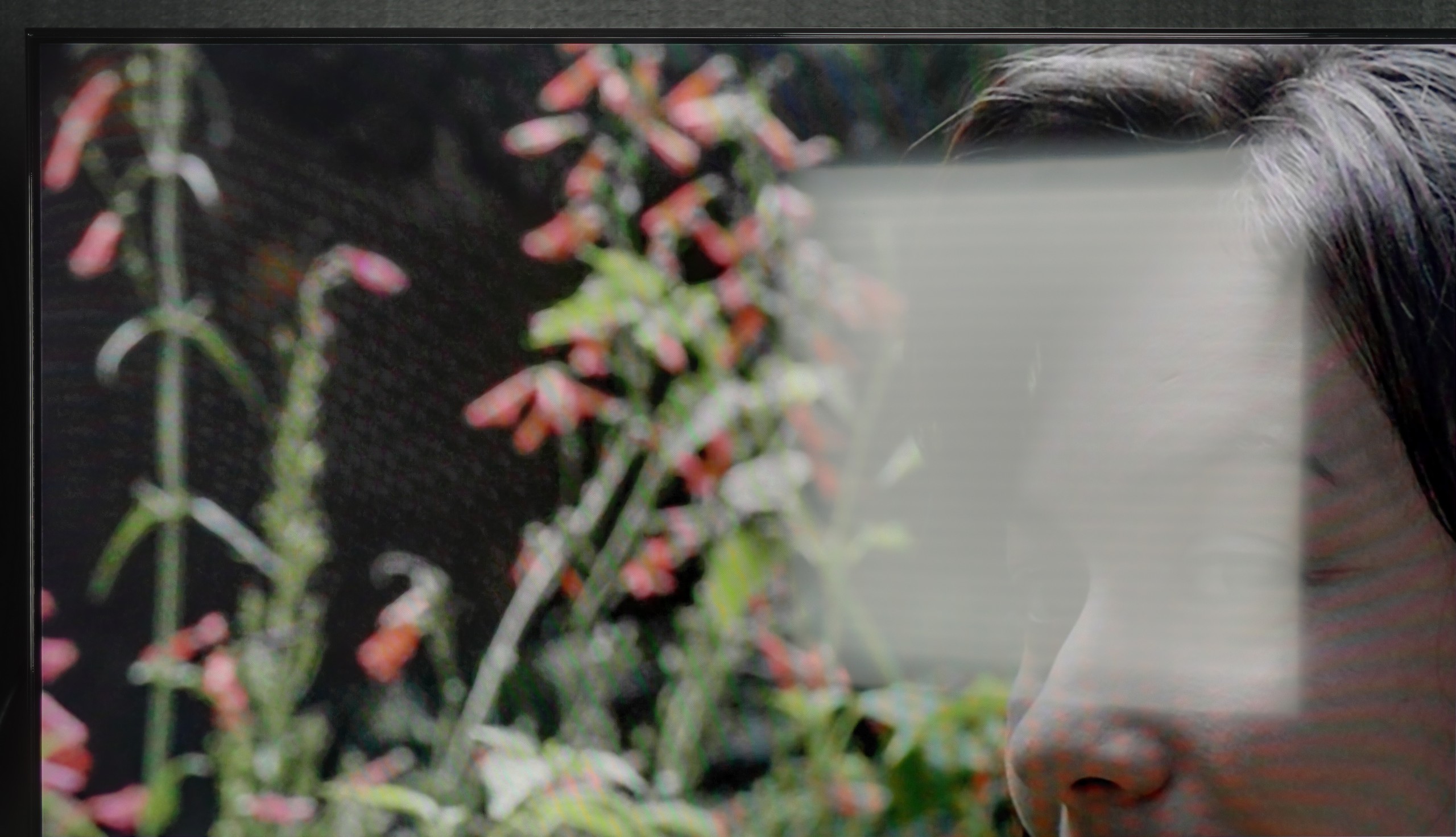
Matrix brightness
Average luminance SDR
SONY BRAVIA 3: 337 cd/m2
Hisense U7Q: 519 cd/m2
The U7Q performs quite well in a sunlit room. The brightness in SDR mode averages around 520 nits, which in practice means that even on sunny days, it's comfortable to watch television—without the feeling that everything is drowning in our reflections. Additionally, thanks to the satin coating on the panel, the television does a good job of reducing reflections.
The Bravia 3 performs quite decently against daylight. The applied satin coating on the screen effectively reduces reflections, and colors do not lose their intensity when stronger light from outside hits the screen. As a result, in typical home conditions, with the blinds open or in a living room with a larger window, the image maintains its readability. However, it is important to remember that this is not a high-brightness television. The Bravia 3 has no chance of competing with brighter models, so in very sunlit rooms, there are moments when the screen simply cannot compete with the intense light. Under normal conditions, it handles well, but in more challenging scenarios, one should not expect miracles.
Details about the matrix
Subpixel Structure:

Panel uniformity and thermal imaging:

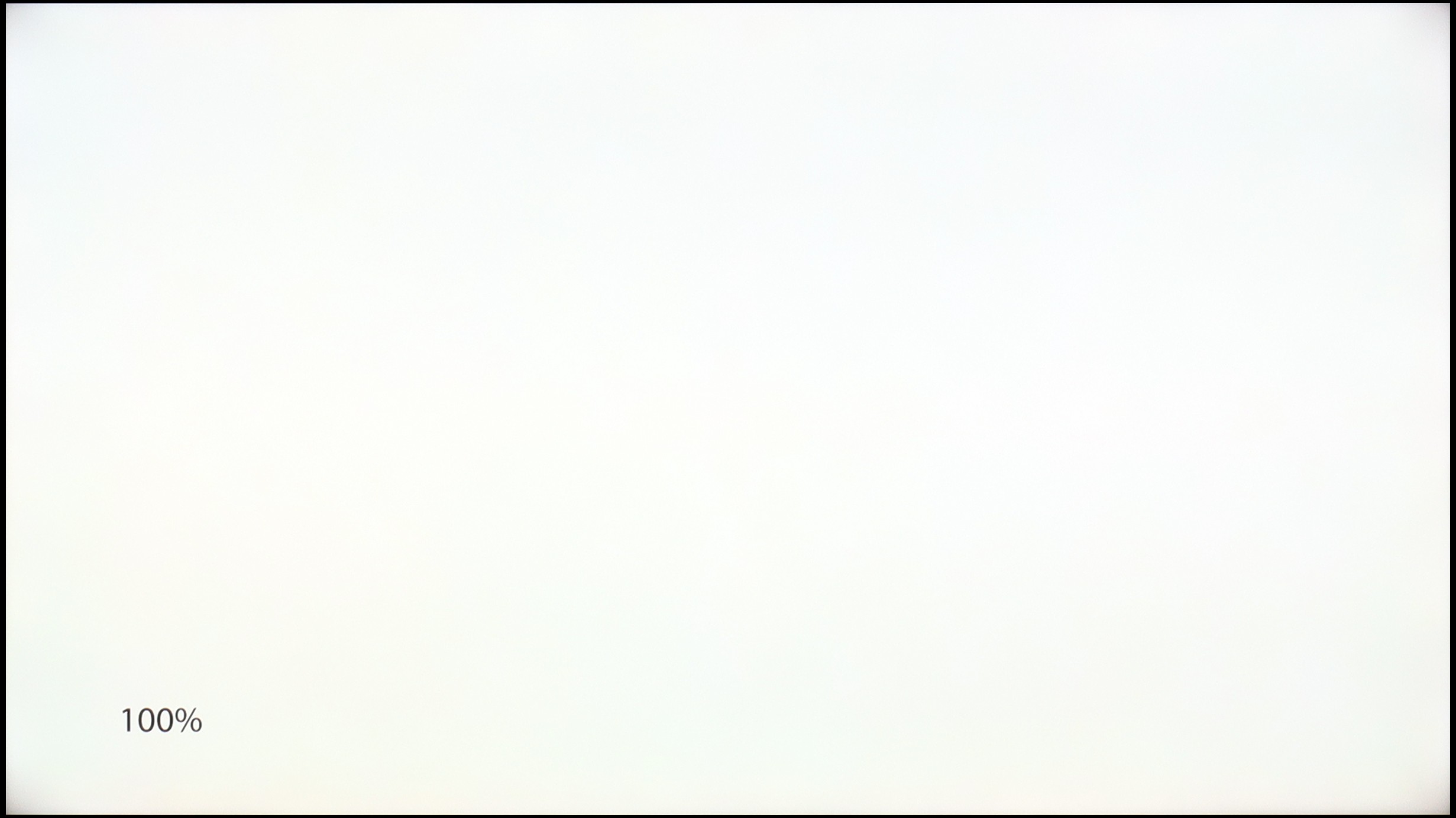
Hisense U7Q
SONY BRAVIA 3
TV features
8.9/10
6.6/10
- HDMI inputs2 x HDMI 2.0, 2 x HDMI 2.1 48Gbps4 x HDMI 2.0, 0 x HDMI 2.1
- Other inputsRCA (Chinch)
- OutputsToslink (Optical audio), eARC (HDMI), ARC (HDMI), Mini-Jack (Headphones)Toslink (Optical audio), eARC (HDMI), ARC (HDMI)
- Network InterfacesWi-Fi 2.4GHz, Wi-Fi 5GHz, Ethernet (LAN) 100MbpsWi-Fi 2.4GHz, Wi-Fi 5GHz, Ethernet (LAN) 100Mbps
- TV receptionDVB-T, DVB-T2, DVB-S, DVB-S2DVB-T, DVB-T2, DVB-S, DVB-S2, DVB-C
Classic features:
- Recording to USB (terrestrial TV)
- Recording programming
- Picture in Picture (PiP)
- RF remote control (no need to aim at the screen)
- Backlit remote control
- Teletext
- Audio only mode
- Bluetooth headphones support
- Simultaneous Bluetooth headphones & TV audio
Smart features:
- AirPlay
- Screen mirroring (Windows Miracast)
- Voice search
- Voice search in native language
- Ability to connect a keyboard and mouse




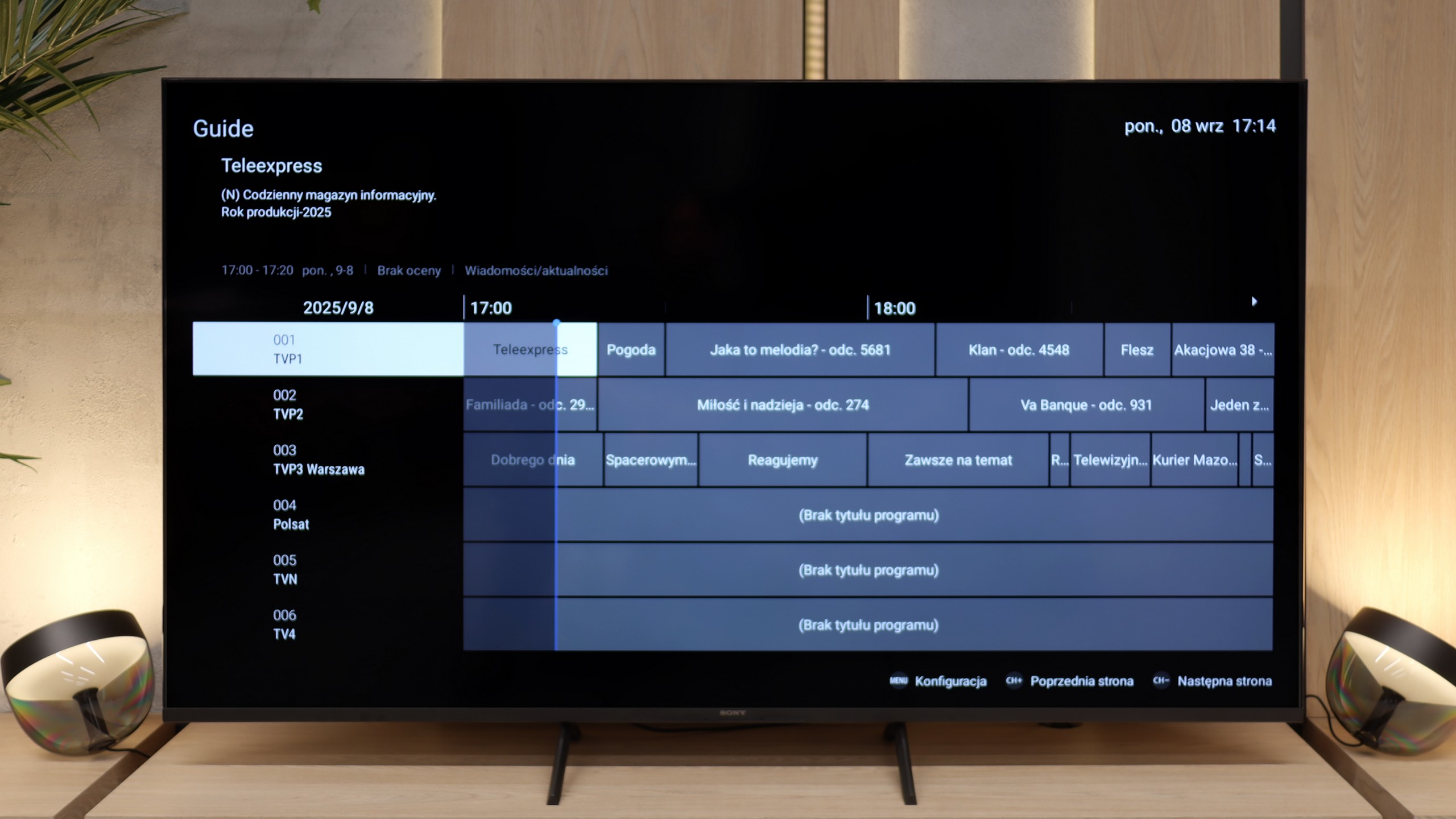
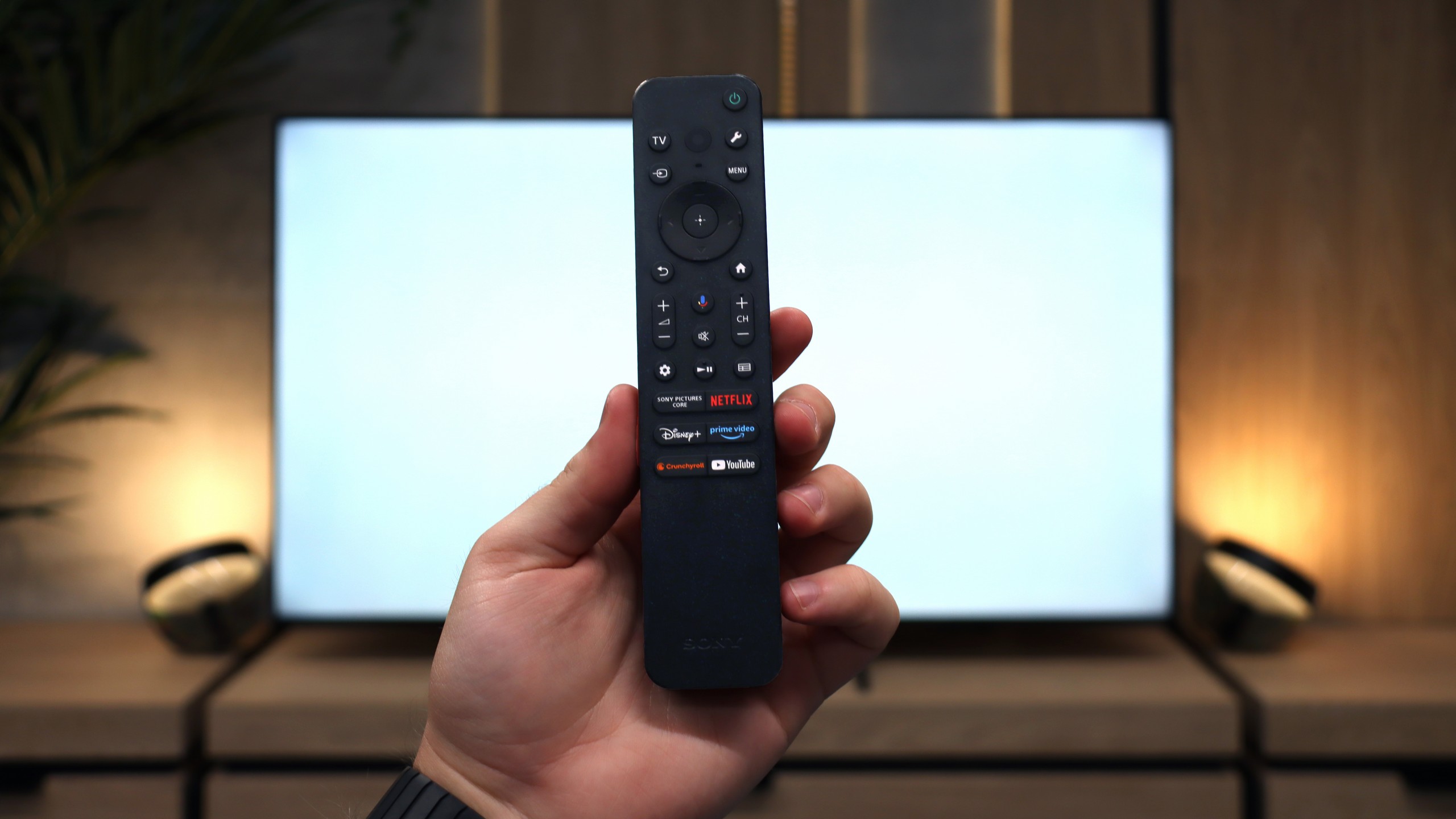
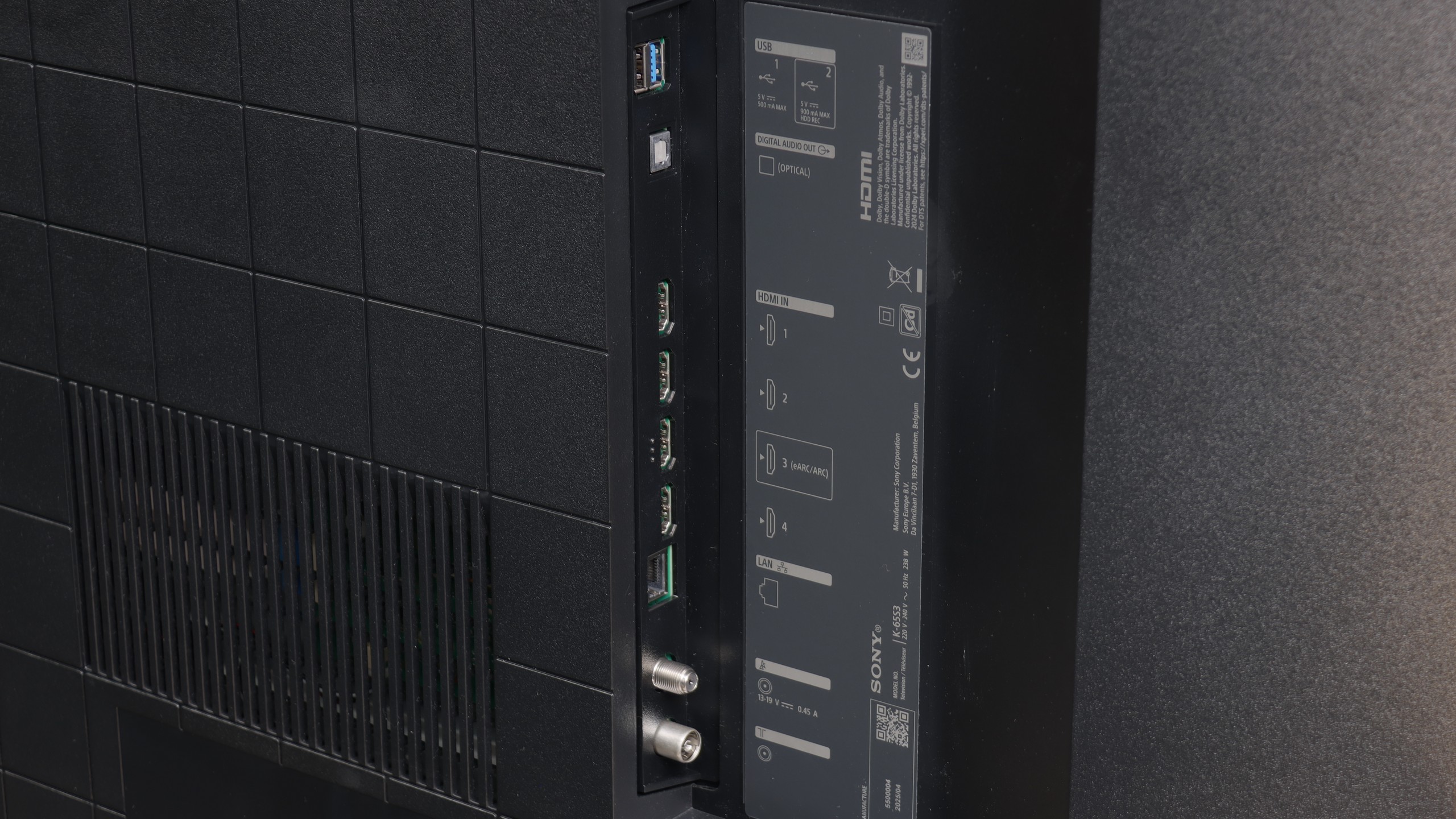
Classic Features of U7Q
Hisense U7Q has a lot to offer when it comes to classic TV features. You can record programs to USB, easily connect external devices via Bluetooth, and the interface – such as EPG – is clear and readable. It may sound like something mainly appreciated by seniors, but the truth is that the U7Q has practically everything needed for watching traditional television. The only thing missing here is the PiP (picture-in-picture) feature.
Smart TV U7Q: Vidaa
When it comes to Smart features, the U7Q runs on the proprietary VIDAA system. And I must admit – it works really smoothly. Voice search in Polish? No issues. AirPlay and screen mirroring? They work without any problems as well. Of course, one must be aware that VIDAA is a closed system, so – as is often the case – some popular apps, especially those related to music, are missing. Therefore, before purchasing, it’s worth checking if all the apps you use daily are available.
Smart TV Features
The biggest advantage of the Bravia 3 in everyday use is the presence of the Google TV system. Thanks to it, we have access to one of the largest libraries of applications and streaming services, so regardless of whether someone mainly uses Netflix, Disney+, or smaller platforms, everything is at their fingertips. The Google Assistant also worked very well, as it was able to respond to our commands quite "smartly." The Google TV system in theory should work very smoothly because Sony has been implementing it better than many cheaper competitors for years. Unfortunately, in the case of the Bravia 3, it is not as great as we would expect. During testing, we noticed slight stutters in the interface, and some functions, such as screen mirroring, simply refused to cooperate. One could get the impression that the processor in this model sometimes struggles with the demanding system, and not everything works as smoothly as we would hope.
Classic Features
Sony, even in the cheapest series, manages to remind us of its experience with various users. In the set, we find as many as two remotes. The first is modern and minimalist, with a small number of buttons, which works great when using applications and Google TV functions. The second is a classic remote with a richer set of keys and a numeric keypad, which will be appreciated especially by older people accustomed to traditional solutions. This is a nice nod to different user groups, and it must be admitted that Sony handled this very practically. It is a pity, however, that compared to the X75WL model, the ability to record content from TV tuners to USB memory has disappeared. The manufacturer has completely eliminated this feature, so if someone was attached to it, they will unfortunately not find it in the Bravia 3.
Playing files from USB
8.2/10
9.6/10
Supported photo formats:
Maximum photo resolution:

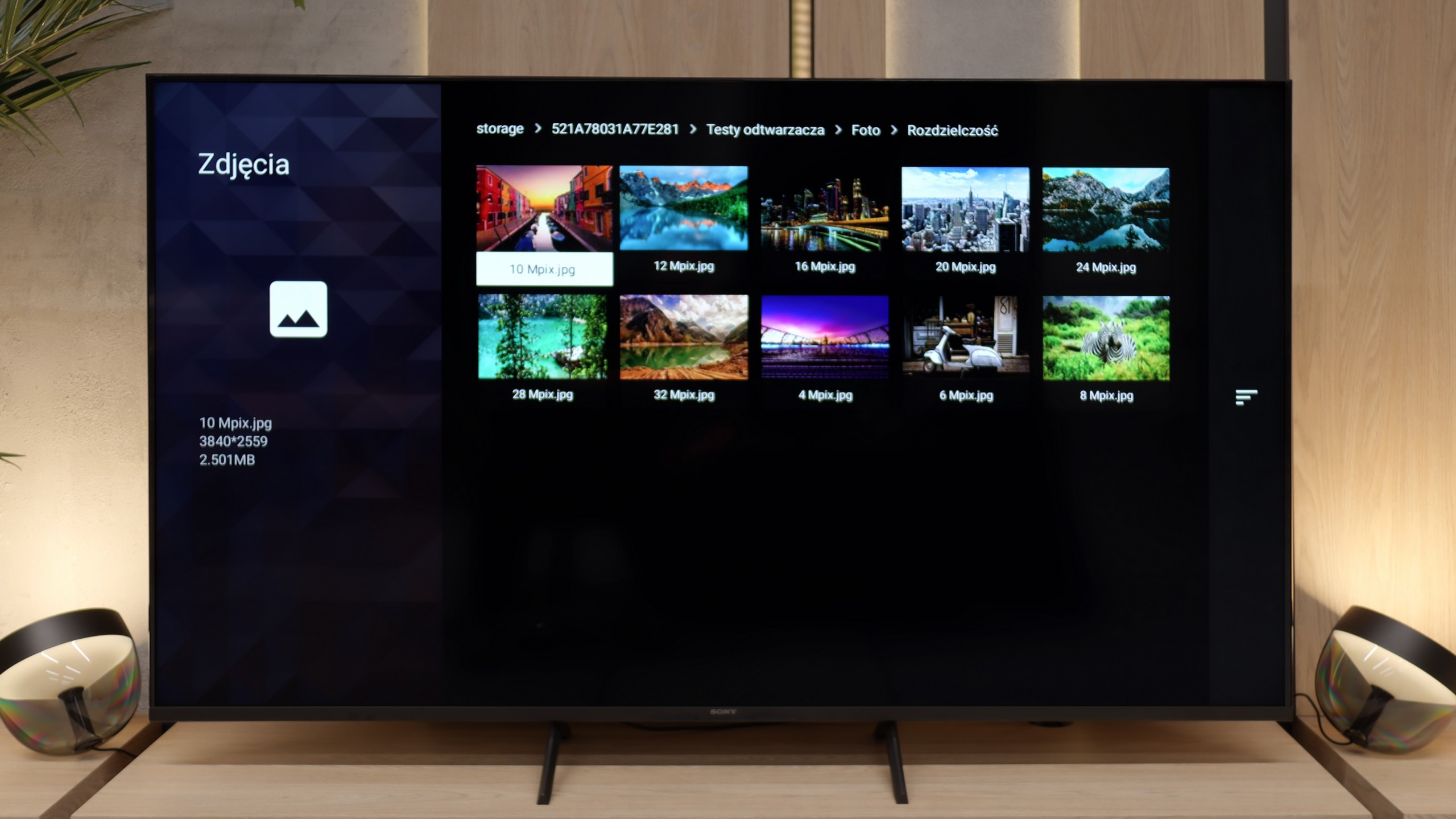
The built-in player in the U7Q fully meets the needs of most future users. The television seamlessly supports Polish characters and most popular video, audio, and photo formats. If we had to nitpick, it would be only about the limited support for certain photo resolutions – there are occasions when files from the camera are not displayed correctly. It's worth keeping this in mind if you plan to present photos directly from a DSLR or phone.
Here Sony really did a great job. The built-in player works quickly and doesn't "struggle" when launching various formats. We didn't need to reach for external applications like VLC because the television handled even files that can cause a lot of problems on other models – such as HEIC photos from Apple devices. It's a small detail, but one that shows the manufacturer wanted the user to have a sense of complete convenience. By plugging a movie onto a USB stick or photos from vacation onto an external drive, you can simply connect them and watch immediately on the big screen. No fussing, no installing additional software, no searching for workarounds. This is really rare in televisions, and it must be admitted that in this aspect, the Bravia 3 pleasantly surprised us.
Apps
7.7/10
9.6/10














































Sound
7.2/10
6.5/10
- Maximum volume82dB88dB
- Dolby Digital Plus 7.1
- Dolby True HD 7.1
- Dolby Atmos in Dolby Digital Plus (JOC)
- Dolby Atmos in Dolby True HD
- DTS:X in DTS-HD MA
- DTS-HD Master Audio
Sound is one of the major advantages of the U7Q. The TV sounds really pleasant – there is a slightly noticeable bass, good tone balance, and it is definitely something more than just for "everyday news watching." You can easily play music on it and just enjoy the sound – of course in an entertaining way, not an audiophile one 😉. It also deserves high praise for full support for the most important audio codecs, which worked flawlessly. A small exception is Dolby Atmos in TrueHD version, which did not fully play when connected to a home theater, so if someone uses this format – it's worth keeping in mind – it may be a software bug.
Bravia 3 sounds quite flat, but makes up for it with volume. It is excellent for watching traditional television, as the dialogues are clear and the mid-tones are easily audible. This type of sound profile will be especially appreciated by older users, who primarily care about speech intelligibility. However, if someone expects something more from the sound, such as stronger bass or a wider soundstage, it is still worth reaching for a soundbar. The TV supports modern codecs, including Dolby Atmos and DTS:X, so an external sound system can easily take advantage of their potential. This assures that with a relatively small expenditure, one can achieve a much fuller and more engaging sound.
Sound Quality Test
No sound test video
Acoustic Measurements
82dBC (Max)
75dBC
88dBC (Max)
75dBC


